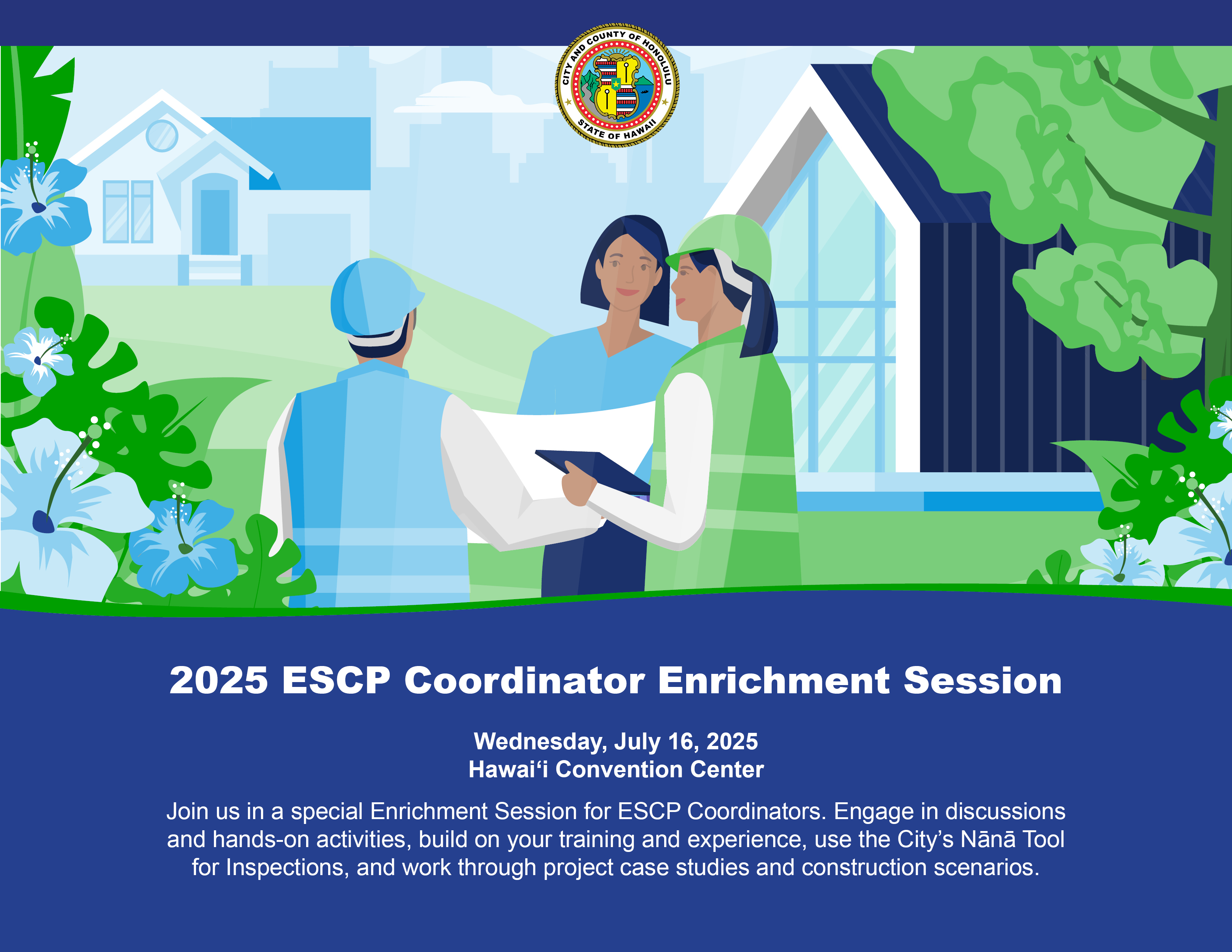Cancelling your registration will remove your access to the event. If you proceed, you will no longer be able to participate or access event-related materials.
Deleting your account will remove your access to the event.

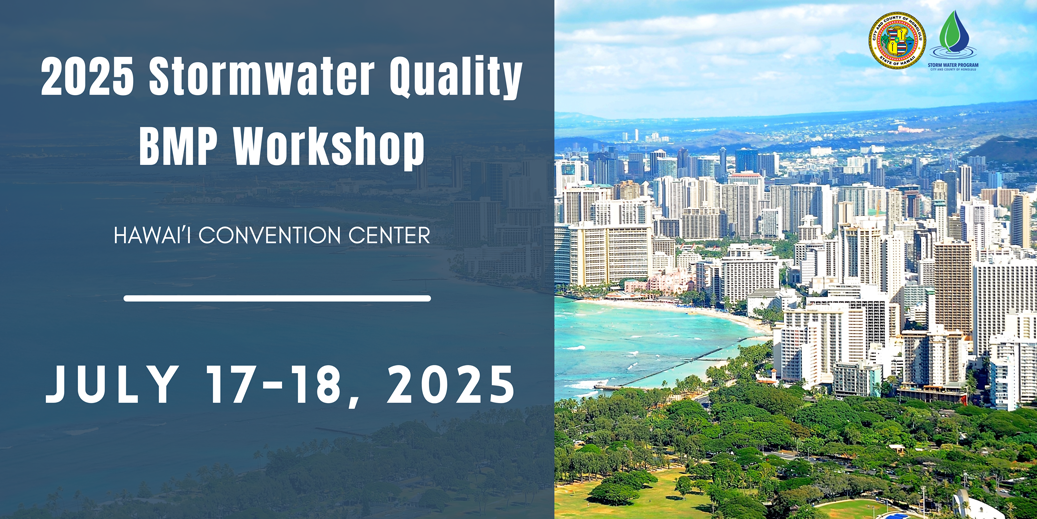
Join the City and County of Honolulu for educational workshops on stormwater quality Best Management Practices (BMPs). This will be an in-person event. Please join us at the Hawai'i Convention Center and register using the VFairs platform.
Click on the Registration button for more information regarding ticketing.
Contractors, developers, stormwater management professionals, landscape design and maintenance professionals, planners, watershed management and conservation professionals, agricultural professionals, natural resource managers, and property management and maintenance professionals will find useful stormwater related information. This year's breadth of presentation topics has expanded to include:
Exciting Partnership Announcement!
This year, we are proud to partner with the American Public Works Association (APWA) to bring even more valuable insights to our workshop. In addition to our three tracks focused on stormwater presentations, we are introducing a fourth track dedicated to APWA speakers, featuring expert discussions on public works, infrastructure, and sustainable solutions.
Location: Hawai’i Convention Center
Audience: Contractors, developers, stormwater management professionals, landscape designers, planners, conservationists, agricultural professionals, natural resource managers, and property managers.
Duis aute irure dolor in reprehenderit in voluptate velit esse cillum dolore eu fugiat nullapariatur.Duis aute irure dolor in reprehenderit.





Lorem ipsum dolor sit amet consectetur. Sit aenean at mauris ut vel. Vel quam et faucibus dui ornare urna cras ultrices. Pellentesque.

Lorem ipsum dolor sit amet consectetur adipisicing elit. Eius totam quis doloribus tempore incidunt! Architecto tempora dolorum ut nostrum expedita! Dolorum exercitationem aperiam expedita delectus nostrum necessitatibus facere quaerat non.

Lorem ipsum dolor sit amet consectetur adipisicing elit. Eius totam quis doloribus tempore incidunt! Architecto tempora dolorum ut nostrum expedita! Dolorum exercitationem aperiam expedita delectus nostrum necessitatibus facere quaerat non.

Lorem ipsum dolor sit amet consectetur adipisicing elit. Eius totam quis doloribus tempore incidunt! Architecto tempora dolorum ut nostrum expedita! Dolorum exercitationem aperiam expedita delectus nostrum necessitatibus facere quaerat non.

Lorem ipsum dolor sit amet consectetur adipisicing elit. Eius totam quis doloribus tempore incidunt! Architecto tempora dolorum ut nostrum expedita! Dolorum exercitationem aperiam expedita delectus nostrum necessitatibus facere quaerat non.

Lorem ipsum dolor sit amet consectetur adipisicing elit. Eius totam quis doloribus tempore incidunt! Architecto tempora dolorum ut nostrum expedita! Dolorum exercitationem aperiam expedita delectus nostrum necessitatibus facere quaerat non.
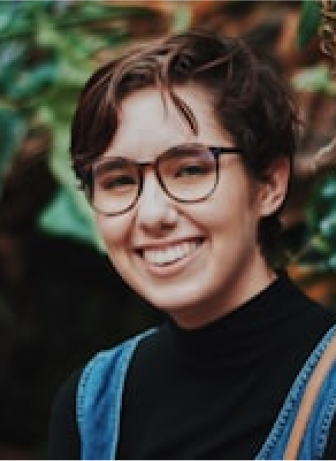
Lorem ipsum dolor sit amet consectetur adipisicing elit. Eius totam quis doloribus tempore incidunt! Architecto tempora dolorum ut nostrum expedita! Dolorum exercitationem aperiam expedita delectus nostrum necessitatibus facere quaerat non.

Lorem ipsum dolor sit amet consectetur adipisicing elit. Eius totam quis doloribus tempore incidunt! Architecto tempora dolorum ut nostrum expedita! Dolorum exercitationem aperiam expedita delectus nostrum necessitatibus facere quaerat non.

Lorem ipsum dolor sit amet consectetur adipisicing elit. Eius totam quis doloribus tempore incidunt! Architecto tempora dolorum ut nostrum expedita! Dolorum exercitationem aperiam expedita delectus nostrum necessitatibus facere quaerat non.
 July 17, 2025 07:00 am
to
July 17, 2025 07:00 am
to
 July 17, 2025 08:00 am
to
July 17, 2025 08:00 am
to

Department of Facility Maintenance, City and County of Honolulu
Gene grew up in Honolulu, graduated from Moanalua High School and received his Bachelor of Science degree in Electrical Engineering from California State University Long Beach.
He started his built environment engineering career with a local electrical engineering consulting firm, Nakamura Oyama and Associates, for 15 years. He then moved on to a global engineering firm, WSP, becoming Senior Vice President and the Honolulu Property and Buildings Business Line Leader for the last 17 years.
Through his 30 plus years career, he has attained extensive and diverse design engineering and project management experience working with various Federal, State and County agencies; and private sector clients.
His projects have spanned throughout the Asia Pacific and USA regions including Hawai’i, the Continental USA, Japan, Korea, the Philippines, China, Singapore, and various Pacific islands. His professional credentials include being a licensed professional engineer in Hawai’i, California, the territory of Guam and the Commonwealth of the Northern Marianas Islands; a LEED AP and an International Code Council certified electrical plans reviewer.


Department of Facility Maintenance, City and County of Honolulu
Randall Wakumoto is the Program Administrator for the City and County of Honolulu’s Storm Water Quality Division within its Department of Facility Maintenance. He has 28 years of engineering work experience with the City and County of Honolulu and has a Bachelor of Science’s degree in Civil Engineering from Santa Clara University.
He also possesses a professional engineer’s license in the State of Hawaii. His responsibilities involve administering the City’s storm water management program which includes coordinating with the various City departments to ensure compliance under the Federal Clean Water Act requirements.
He oversees a group of engineers, planners, environmental technicians and community relations specialists that perform various types of inspections, enforcement, water quality sampling and monitoring, public education, outreach and training. In addition, the division is involved in managing and implementing a number of Capital Improvement Program (CIP) projects focused on improving water quality.


HDR, Inc.


Mayor’s Office, City and County of Honolulu

 July 17, 2025 08:20 am
to
July 17, 2025 08:20 am
to
 July 17, 2025 08:30 am
to
July 17, 2025 08:30 am
toThis presentation explores the impact of trash on urban watersheds, focusing on its role in sediment capture and downstream transport. Trash negatively affects water quality, habitats, and aesthetics, and can contribute to flooding. The talk highlights strategies for capturing both trash and sediment, with case examples from watersheds discharging onto beaches, including a challenging transboundary watershed in Tijuana, Mexico. Key insights from trash cleanup and sediment dredging activities over the past decade will be shared, offering solutions for managing these pollutants in various watershed types.


DLNR
Emma Yuen is the manager of the native ecosystems program of the Division of Forestry and Wildlife, DLNR. She leads the Department’s top priority initiative to protect Hawaii’s source of water: forests.
Emma grew up in Hamakua on Hawaii Island and graduated from Hilo High School. She received a Bachelor’s degree in Public Policy of the Environment and Natural Resources, and a Master’s degree in Sociology from Stanford University. She has received various awards for her leadership and service, including the EPA Region IX Environmental Achievement Award.

This presentation explores the impact of trash on urban watersheds, focusing on its role in sediment capture and downstream transport. Trash negatively affects water quality, habitats, and aesthetics, and can contribute to flooding. The talk highlights strategies for capturing both trash and sediment, with case examples from watersheds discharging onto beaches, including a challenging transboundary watershed in Tijuana, Mexico. Key insights from trash cleanup and sediment dredging activities over the past decade will be shared, offering solutions for managing these pollutants in various watershed types.
This presentation explores the impact of trash on urban watersheds, focusing on its role in sediment capture and downstream transport. Trash negatively affects water quality, habitats, and aesthetics, and can contribute to flooding. The talk highlights strategies for capturing both trash and sediment, with case examples from watersheds discharging onto beaches, including a challenging transboundary watershed in Tijuana, Mexico. Key insights from trash cleanup and sediment dredging activities over the past decade will be shared, offering solutions for managing these pollutants in various watershed types.
 July 17, 2025 08:30 am
to
July 17, 2025 08:30 am
to

City and County of Honolulu, Department of Facility Maintenance
Jonathan Sivalop is currently a Junior at the University of Hawaii studying Creative Media and Graphic Design. He enjoys anything pop culture related and spending time with my friends and family.


City and County of Honolulu, Department of Facility Maintenance
Kaimalie Stensgaard is a soon to be graduate student at the University of Hawaii at Manoa, with a bachelors in biological engineering. Kaimalie is a single mom to a sassy cat, is a big fan of noodle soups of any kind, and is pursuing a career in engineering, with a bias towards water treatment and environmental preservation


City and County of Honolulu, Department of Facility Maintenance
Kamalani Goo will be a senior studying mechanical engineering at the University of Hawaii at Manoa. Kamalani grew up on the island of Kaua`i, and is interested in the environment, and loves to be outdoors.


City and County of Honolulu, Department of Facility Maintenance
Karley Beaver is a Senior at Hawai’i Pacific University studying social work. In her free time, Karley enjoys hiking and reading

 July 17, 2025 08:30 am
to
July 17, 2025 08:30 am
toThe Department of Facility Maintenance has been working with stakeholders since 2019 to develop a Storm Water Fee (SWF) for Oʻahu to support the island's stormwater management needs. The proposed fee will apply to properties with 300 or more square feet of impervious surface, such as rooftops, driveways, and parking lots. The SWF will fund the Storm Water Enterprise Fund, ensuring dedicated revenue for managing and maintaining the island's stormwater system, which includes activities like stream cleaning, beach mouth openings, and stormwater pollution control.
The SWF fee will be based on the amount of impervious surface on each property, which serves as a proxy for the stormwater runoff it generates. The department has developed a rate model to assess different rate structure options and service levels. The model takes into account stormwater operation and maintenance services, as well as capital projects for controlling stormwater volumes and addressing pollutants. The proposal includes stakeholder engagement with residents, businesses, and community groups to gather input and assess the potential impacts on different property types. The goal is to create a more equitable and sustainable funding system for stormwater management on Oʻahu.


Jacobs
Laurens van der Tak is a water resources engineer with more than 34 years of experience including supporting the City and County of Honolulu over the last 6 years.
Laurens helps public and private clients to address stormwater and water resource issues including climate vulnerability assessments and adaptation, green stormwater infrastructure, flood and sewer system modeling, water supply planning modeling and user-fee-funded stormwater utility enterprises.
Laurens is a native of Washington, DC, based out of Jacobs’ Silver Spring, MD office, also serving as the Americas Water Resilience Director for Jacobs.


Birchline Planning LLC
Juli Beth (JB) Hinds is Principal of Birchline Planning LLC, and a Continuing Lecturer in the Department of Urban Studies & Planning at UC San Diego where she teaches land use planning, urban policy, and planning for sustainable communities.
JB served as a community planning and stormwater utility director for over a decade and has worked as an advisor to the US EPA on green infrastructure and decentralized wastewater systems.
She works as a consultant to the City and County of Honolulu Department of Facility Maintenance, and other local governments and utilities, on ‘anything involving water, land use, and money.” Her focus is on zoning and code updates, green infrastructure, utility management, stormwater and wastewater fees, and incentive programs.
She was the inaugural chair of the Water Environment Federation’s Stormwater Research Symposium and is active in WEF’s Jammin 4 Water charity program. She and her husband Nick spend as much time as possible on boats and love living in San Diego.

The Department of Facility Maintenance has been working with stakeholders since 2019 to develop a Storm Water Fee (SWF) for Oʻahu to support the island's stormwater management needs. The proposed fee will apply to properties with 300 or more square feet of impervious surface, such as rooftops, driveways, and parking lots. The SWF will fund the Storm Water Enterprise Fund, ensuring dedicated revenue for managing and maintaining the island's stormwater system, which includes activities like stream cleaning, beach mouth openings, and stormwater pollution control.
The SWF fee will be based on the amount of impervious surface on each property, which serves as a proxy for the stormwater runoff it generates. The department has developed a rate model to assess different rate structure options and service levels. The model takes into account stormwater operation and maintenance services, as well as capital projects for controlling stormwater volumes and addressing pollutants. The proposal includes stakeholder engagement with residents, businesses, and community groups to gather input and assess the potential impacts on different property types. The goal is to create a more equitable and sustainable funding system for stormwater management on Oʻahu.
The Department of Facility Maintenance has been working with stakeholders since 2019 to develop a Storm Water Fee (SWF) for Oʻahu to support the island's stormwater management needs. The proposed fee will apply to properties with 300 or more square feet of impervious surface, such as rooftops, driveways, and parking lots. The SWF will fund the Storm Water Enterprise Fund, ensuring dedicated revenue for managing and maintaining the island's stormwater system, which includes activities like stream cleaning, beach mouth openings, and stormwater pollution control.
The SWF fee will be based on the amount of impervious surface on each property, which serves as a proxy for the stormwater runoff it generates. The department has developed a rate model to assess different rate structure options and service levels. The model takes into account stormwater operation and maintenance services, as well as capital projects for controlling stormwater volumes and addressing pollutants. The proposal includes stakeholder engagement with residents, businesses, and community groups to gather input and assess the potential impacts on different property types. The goal is to create a more equitable and sustainable funding system for stormwater management on Oʻahu.
 July 17, 2025 08:30 am
to
July 17, 2025 08:30 am
to


 July 17, 2025 09:00 am
to
July 17, 2025 09:00 am
to
 July 17, 2025 09:30 am
to
July 17, 2025 09:30 am
toTrash negatively affects water quality, ecosystems, and aesthetics, and can cause beach closures and flooding by clogging waterways. Accurately measuring trash loads in streams is difficult due to reliance on land-use assumptions rather than real storm data or specific watershed conditions. Trash is often linked to sediment movement, as seen in urban flood control systems where both accumulate. This presentation explores methods to capture both trash and sediment, with case studies including a complex transboundary watershed in Tijuana discharging into San Diego. Data from cleanup and dredging efforts reveal variations in trash density and composition, which are crucial for designing effective mitigation systems. The session highlights practical projects and lessons applicable across different watershed types.


HDR, Inc.
Alex has 25 years of experience in planning, design, and construction of award-winning stormwater and flood control projects across the US. He is a Professional Civil Engineer in the State of California, a Certified Floodplain Manager, and an Envision Sustainability Professional.
Alex has led and supported several large stormwater programs to improve stormwater quality and conveyance that includes the City of San Diego’s Stormwater WIFIA Program, Los Angeles County’s Safe, Clean Water Stormwater Program, and the Ca Department of Water Resources’ Statewide Flood Risk Program. Alex is HDR’s VP/West Region Leader for Water Resources and is based out of San Diego.


HDR, Inc.
Dr. Stefanovic brings 35 years of experience in water resources engineering for a wide range of clients (federal, state, municipal and private sectors).
His primary area of technical expertise involves the integration of surface-water hydrology, multi-dimensional hydraulic and sediment-transport modeling and river mechanics with fluvial geomorphology to solve flooding, sedimentation, trash capture, river stability, and scour/erosion mitigation problems.
Dr. Stefanovic developed a correlation between anticipated trash yield and computed sediment volumes to estimate trash volumes by storm return interval to support trash load reductions in major waterways. Dr. Stefanovic is HDR’s National Tech Advisor Sediment Transport & Scour and is based out of San Diego.

Trash negatively affects water quality, ecosystems, and aesthetics, and can cause beach closures and flooding by clogging waterways. Accurately measuring trash loads in streams is difficult due to reliance on land-use assumptions rather than real storm data or specific watershed conditions. Trash is often linked to sediment movement, as seen in urban flood control systems where both accumulate. This presentation explores methods to capture both trash and sediment, with case studies including a complex transboundary watershed in Tijuana discharging into San Diego. Data from cleanup and dredging efforts reveal variations in trash density and composition, which are crucial for designing effective mitigation systems. The session highlights practical projects and lessons applicable across different watershed types.
Trash negatively affects water quality, ecosystems, and aesthetics, and can cause beach closures and flooding by clogging waterways. Accurately measuring trash loads in streams is difficult due to reliance on land-use assumptions rather than real storm data or specific watershed conditions. Trash is often linked to sediment movement, as seen in urban flood control systems where both accumulate. This presentation explores methods to capture both trash and sediment, with case studies including a complex transboundary watershed in Tijuana discharging into San Diego. Data from cleanup and dredging efforts reveal variations in trash density and composition, which are crucial for designing effective mitigation systems. The session highlights practical projects and lessons applicable across different watershed types.
 July 17, 2025 09:30 am
to
July 17, 2025 09:30 am
toA case study from Pierce County, WA, highlights the reassessment of a data-limited Total Maximum Daily Load (TMDL) for Clarks Creek, a high-value stream with a healthy salmon population. Initially listed as impaired for low dissolved oxygen (DO), the original TMDL was based on limited data and modeling. A 5-year reassessment, incorporating additional data and advanced modeling, revealed that traditional stormwater treatment would not effectively address the creek’s issues. The updated approach focuses on improving stream aeration, targeted plant removal, and refined management strategies, strengthening the technical foundation for future water quality protection efforts.


Brown and Caldwell
Clifton Bell is Brown and Caldwell’s Technical Leader for Water Quality, and has more than 30 years of experience in water quality management, modeling, and planning. A former hydrologist with the U.S. Geological Survey, he focuses on linking the scientific, regulatory, and implementation aspects of water quality challenges.
Clifton support BC clients nationwide to design watershed management programs. Clifton has a B.S. in geology from William & Mary, and an M.S. in environmental engineering from Virginia Tech. He is a licensed professional engineer and certified professional geologist.

A case study from Pierce County, WA, highlights the reassessment of a data-limited Total Maximum Daily Load (TMDL) for Clarks Creek, a high-value stream with a healthy salmon population. Initially listed as impaired for low dissolved oxygen (DO), the original TMDL was based on limited data and modeling. A 5-year reassessment, incorporating additional data and advanced modeling, revealed that traditional stormwater treatment would not effectively address the creek’s issues. The updated approach focuses on improving stream aeration, targeted plant removal, and refined management strategies, strengthening the technical foundation for future water quality protection efforts.
A case study from Pierce County, WA, highlights the reassessment of a data-limited Total Maximum Daily Load (TMDL) for Clarks Creek, a high-value stream with a healthy salmon population. Initially listed as impaired for low dissolved oxygen (DO), the original TMDL was based on limited data and modeling. A 5-year reassessment, incorporating additional data and advanced modeling, revealed that traditional stormwater treatment would not effectively address the creek’s issues. The updated approach focuses on improving stream aeration, targeted plant removal, and refined management strategies, strengthening the technical foundation for future water quality protection efforts.
 July 17, 2025 09:30 am
to
July 17, 2025 09:30 am
toThe stormwater regulatory landscape is evolving to address growing concerns about water quality and environmental protection. Recent trends show agencies moving towards stricter and more comprehensive regulatory frameworks. Key changes include:
1) EPA Actions: The U.S. Environmental Protection Agency (EPA) is issuing stormwater permits under its residual designation authority for previously uncovered commercial, industrial, and institutional sources.
2) Supreme Court Rulings: Key decisions are shaping the interpretation of the Clean Water Act, particularly in relation to groundwater and surface water connections, and enforcement of discharge permits.
3) Emerging Contaminants: Increasing focus on new pollutants, like PFAS, microplastics, and 6PPD-quinone, which will influence future stormwater regulations and permits.
These changes, driven by both judicial decisions and evolving regulatory priorities, highlight the need for municipalities and industries to stay ahead of stormwater compliance challenges.


Kennedy/Jenks Consultants
Ross Dunning is Kennedy Jenks' stormwater practice leader and senior technical resource for Clean Water Act permit support and drainage and treatment design based in Federal Way, WA.
Ross is an accomplished project manager with a broad range of civil engineering experience specifically focused on the fields of stormwater conveyance and treatment and he is abreast of the stormwater regulatory climate across the country.
His primary focus is helping transportation sector agencies and municipalities to navigate the maze of federal, state, and local regulations to find sound engineering solutions benefitting business and the environment.


Kennedy Jenks
Samantha Karpa is an environmental engineer based in Federal Way, Washington, specializing in stormwater regulatory compliance and the design of stormwater treatment and conveyance systems. She is experienced in developing Stormwater Pollution Prevention Plans (SWPPPs), training environmental personnel, preparing recurring compliance documents, and providing litigation support. Samantha’s design work includes evaluating stormwater characteristics to develop treatment alternatives, preparing hydrologic and hydraulic models, performing in-field pilot testing of stormwater treatment technologies, and evaluating existing stormwater infrastructure for retrofit applicability. Her expertise combines technical knowledge with practical application for addressing her client's needs.

The stormwater regulatory landscape is evolving to address growing concerns about water quality and environmental protection. Recent trends show agencies moving towards stricter and more comprehensive regulatory frameworks. Key changes include:
1) EPA Actions: The U.S. Environmental Protection Agency (EPA) is issuing stormwater permits under its residual designation authority for previously uncovered commercial, industrial, and institutional sources.
2) Supreme Court Rulings: Key decisions are shaping the interpretation of the Clean Water Act, particularly in relation to groundwater and surface water connections, and enforcement of discharge permits.
3) Emerging Contaminants: Increasing focus on new pollutants, like PFAS, microplastics, and 6PPD-quinone, which will influence future stormwater regulations and permits.
These changes, driven by both judicial decisions and evolving regulatory priorities, highlight the need for municipalities and industries to stay ahead of stormwater compliance challenges.
The stormwater regulatory landscape is evolving to address growing concerns about water quality and environmental protection. Recent trends show agencies moving towards stricter and more comprehensive regulatory frameworks. Key changes include:
1) EPA Actions: The U.S. Environmental Protection Agency (EPA) is issuing stormwater permits under its residual designation authority for previously uncovered commercial, industrial, and institutional sources.
2) Supreme Court Rulings: Key decisions are shaping the interpretation of the Clean Water Act, particularly in relation to groundwater and surface water connections, and enforcement of discharge permits.
3) Emerging Contaminants: Increasing focus on new pollutants, like PFAS, microplastics, and 6PPD-quinone, which will influence future stormwater regulations and permits.
These changes, driven by both judicial decisions and evolving regulatory priorities, highlight the need for municipalities and industries to stay ahead of stormwater compliance challenges.
 July 17, 2025 09:30 am
to
July 17, 2025 09:30 am
to




 July 17, 2025 10:00 am
to
July 17, 2025 10:00 am
to
 July 17, 2025 10:15 am
to
July 17, 2025 10:15 am
to

Brown and Caldwell
Marissa is an Environmental Engineer with experience as a project manager and project engineer in water supply planning, emergency response plans, risk and resiliency assessments, stormwater BMP design, permitting, and infrastructure design.
She has supported a variety of projects for municipal water and wastewater clients, including master planning, risk and resiliency assessments, water supply and demand, feasibility studies, condition assessment, flow monitoring, and pipe rehabilitation projects.


Brown and Caldwell
Andrea focuses on design project delivery and project/design management. She has experience leading civil efforts on large design projects, coordinating multi-faced teams, and overseeing other team members. Andrea currently serves as the Civil Portfolio Design Leader for Western Business Unit 1, which includes coordinating the scoping, staffing, and quality review needs of civil design projects from Hawaii, Guam, Washington, Idaho, and Vancouver, Canada.

 July 17, 2025 10:15 am
to
July 17, 2025 10:15 am
toMālama Maunalua (MM) is a non-profit dedicated to protecting Maunalua Bay through science, education, and hands-on restoration, focusing on mitigating the impact of stormwater runoff. The organization has worked with various partners to address both water and land issues affecting the bay.
In 2024, MM expanded its efforts across O'ahu, supported by new funding from initiatives like the Wai Maoli Hawai'i Fresh Water Initiative, NFWF, and NOAA. MM partnered with the City and County of Honolulu Division of Facilities and Maintenance and 3RWater to launch a Pilot Rainwater Capture Solution Incentive Program. This program provides free rain barrels, rain gardens, and trees to residents, particularly those in greater socio-economic need, marking the first such program in Hawaii to offer direct installation rather than rebates.
The initiative has garnered strong community response, and the goal is to develop a scalable model for other counties in Hawaii. This presentation will cover the program’s development, outreach, partnerships, and progress so far.


Malama Maunalua
Dr. Pamela Weiant is Director of Science & Planning at Malama Maunalua. During her tenure with MM, she oversees restoration, research, and community projects on land and in the water to further the organization’s goal to protect and preserve Maunalua Bay.
She has been co-leading the Stormwater Capture Solution Incentive Project. She has a BA in Geography from Vassar College, a Master’s in Conservation Biology from Yale University School for the Environment, and a Ph.D. in Marine Science from University of California at Santa Barbara.

Mālama Maunalua (MM) is a non-profit dedicated to protecting Maunalua Bay through science, education, and hands-on restoration, focusing on mitigating the impact of stormwater runoff. The organization has worked with various partners to address both water and land issues affecting the bay.
In 2024, MM expanded its efforts across O'ahu, supported by new funding from initiatives like the Wai Maoli Hawai'i Fresh Water Initiative, NFWF, and NOAA. MM partnered with the City and County of Honolulu Division of Facilities and Maintenance and 3RWater to launch a Pilot Rainwater Capture Solution Incentive Program. This program provides free rain barrels, rain gardens, and trees to residents, particularly those in greater socio-economic need, marking the first such program in Hawaii to offer direct installation rather than rebates.
The initiative has garnered strong community response, and the goal is to develop a scalable model for other counties in Hawaii. This presentation will cover the program’s development, outreach, partnerships, and progress so far.
Mālama Maunalua (MM) is a non-profit dedicated to protecting Maunalua Bay through science, education, and hands-on restoration, focusing on mitigating the impact of stormwater runoff. The organization has worked with various partners to address both water and land issues affecting the bay.
In 2024, MM expanded its efforts across O'ahu, supported by new funding from initiatives like the Wai Maoli Hawai'i Fresh Water Initiative, NFWF, and NOAA. MM partnered with the City and County of Honolulu Division of Facilities and Maintenance and 3RWater to launch a Pilot Rainwater Capture Solution Incentive Program. This program provides free rain barrels, rain gardens, and trees to residents, particularly those in greater socio-economic need, marking the first such program in Hawaii to offer direct installation rather than rebates.
The initiative has garnered strong community response, and the goal is to develop a scalable model for other counties in Hawaii. This presentation will cover the program’s development, outreach, partnerships, and progress so far.
 July 17, 2025 10:15 am
to
July 17, 2025 10:15 am
toGreen stormwater infrastructure (GSI) offers benefits like stormwater management, flood mitigation, and beautification, but its impact varies based on different stakeholders, including contractors, asset managers, operators, and the public. This session reviews different GSI facility types and emphasizes the importance of considering diverse perspectives when planning and designing GSI solutions. While GSI can improve public spaces, it may also lead to unintended challenges, such as hindering transit access or increasing maintenance costs. The goal is to ensure that GSI solutions are both effective and considerate of the needs of all community members involved.


Jacobs
Emily Stone is an environmental scientist and planner with Jacobs with experience in project planning and development, education and outreach, and community engagement. She works with the City and County of Honolulu Storm Water Quality Division to develop storm water education and training to the public and City staff. Emily enjoys working towards environmental and sustainable solutions aligned with community needs in Hawaii.


Jacobs
Keo is a water resources engineer at Jacobs, with 8 years of experience in Hawaii providing professional engineering and consulting services, delivering and managing stormwater, MS4, GSI, water and wastewater utility and infrastructure projects and programs. Keo works with the City and County of Honolulu’s Storm Water Program to develop GSI Details and training for the public and City staff.


Jacobs
Dustin serves as Jacobs’ Global Technology Lead for Stormwater and Watershed Management, with over 24 years of experience (16+ at Jacobs/CH2M) in water resources and stormwater management.
Dustin integrates green infrastructure with grey solutions that work for clients, protect the environment, and enhance communities, through the development of master plans, guidelines, education and implementation of stormwater solutions.
Dustin also enjoys applying his skillset to ecosystem restoration projects including stream and wetland restoration and culvert fish passage replacement projects. Outside of work Dustin is typically finding ways to play on or around water.

Green stormwater infrastructure (GSI) offers benefits like stormwater management, flood mitigation, and beautification, but its impact varies based on different stakeholders, including contractors, asset managers, operators, and the public. This session reviews different GSI facility types and emphasizes the importance of considering diverse perspectives when planning and designing GSI solutions. While GSI can improve public spaces, it may also lead to unintended challenges, such as hindering transit access or increasing maintenance costs. The goal is to ensure that GSI solutions are both effective and considerate of the needs of all community members involved.
Green stormwater infrastructure (GSI) offers benefits like stormwater management, flood mitigation, and beautification, but its impact varies based on different stakeholders, including contractors, asset managers, operators, and the public. This session reviews different GSI facility types and emphasizes the importance of considering diverse perspectives when planning and designing GSI solutions. While GSI can improve public spaces, it may also lead to unintended challenges, such as hindering transit access or increasing maintenance costs. The goal is to ensure that GSI solutions are both effective and considerate of the needs of all community members involved.
 July 17, 2025 10:45 am
to
July 17, 2025 10:45 am
to
 July 17, 2025 11:00 am
to
July 17, 2025 11:00 am
toThis session provides an update on the Ola Waikīkī project, which focuses on improving water quality in the Ala Wai Canal through nature-based solutions. Over the past year, five local organizations and six pilot projects have been selected to demonstrate green stormwater infrastructure strategies. The presentation will showcase these projects, highlight the organizations leading the efforts, and share key insights from community feedback on green stormwater approaches. Join us to learn how local partnerships and innovative design are advancing a cleaner, healthier Ala Wai.


Hawaii Sea Grant College Program
Dolan Eversole currently serves as the Waikīkī Beach management coordinator through the University of Hawai‘i Sea Grant College Program, in partnership with the Waikīkī Beach Special Improvement District Association. Eversole served as the NOAA Coastal Storms Program, Pacific Islands Regional Coordinator from 2010 to 2015, covering all the U.S. Affiliated Pacific Island (USAPI) territories including American Samoa, Guam, CNMI, the Republic of the Marshall Islands, and the Federated States of Micronesia.
The Coastal Storms Program (CSP) provides outreach and coordination support to the region by supporting vulnerability assessments, and by identifying technological and socio-economic solutions to reduce their vulnerability through measures that improve adaptation and community resilience.
Eversole is a Coastal Geologist by training having earned his degrees in geology and geophysics at UH Manoa. He has completed coursework for the University of Hawaiʻi’s certificate in Disaster Management and Humanitarian Assistance offered through the Department of Urban and Regional Planning at UH Manoa. Eversole served from 2003 to 2010 as a technical and policy advisor to the Office of Conservation and Coastal Lands (OCCL), of the Hawaiʻi Department of Land and Natural Resources (DLNR) on coastal issues including coastal hazard mitigation, coastal management policy, coastal resource conservation, emergency management and climate change adaptation.
In addition to his technical and regional experience, Eversole draws from years of experience as an ocean recreation enthusiast and ocean lifeguard that has complimented his position as a coastal geomorphologist working within the state of Hawaiʻi.
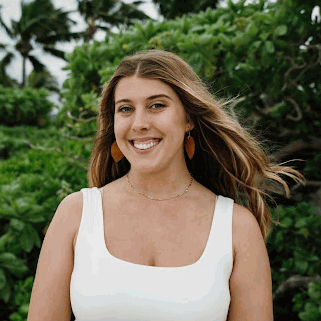

Lauryn Hansen is a 2024 E. Gordon Grau Fellow with Hawai'i Sea Grant. Through a marine and coastal management lens, she is leading a 2-year project to develop a needs assessment that supports the monitoring and management of contaminants of emerging concern in Hawai'i and the U.S.-Affiliated Pacific Islands.
Lauryn holds a Master's of Public Health (MPH) specialized in epidemiology, and a B.S. in Global Environmental Science from the University of Hawaiʻi at Mānoa. Her work primarily focuses on the intersections of oceans and human health, with experience in contamination, ecosystem services, health equity, and science communication.

This session provides an update on the Ola Waikīkī project, which focuses on improving water quality in the Ala Wai Canal through nature-based solutions. Over the past year, five local organizations and six pilot projects have been selected to demonstrate green stormwater infrastructure strategies. The presentation will showcase these projects, highlight the organizations leading the efforts, and share key insights from community feedback on green stormwater approaches. Join us to learn how local partnerships and innovative design are advancing a cleaner, healthier Ala Wai.
This session provides an update on the Ola Waikīkī project, which focuses on improving water quality in the Ala Wai Canal through nature-based solutions. Over the past year, five local organizations and six pilot projects have been selected to demonstrate green stormwater infrastructure strategies. The presentation will showcase these projects, highlight the organizations leading the efforts, and share key insights from community feedback on green stormwater approaches. Join us to learn how local partnerships and innovative design are advancing a cleaner, healthier Ala Wai.
 July 17, 2025 11:00 am
to
July 17, 2025 11:00 am
toThe Hollenbeck Park Lake Rehabilitation Project in Los Angeles serves as a model for funding multi-benefit stormwater projects that address water quality, flood risks, and community space enhancements. The 21-acre park and lake, located in the Boyle Heights neighborhood, faced poor water quality and flooding issues due to urban runoff. The rehabilitation, funded with $25.3 million from LA County’s Safe Clean Water Program, integrates stormwater treatment, habitat restoration, and public space improvements. The project exemplifies how municipalities can leverage dedicated funding to meet regulatory requirements while providing social, economic, and environmental benefits. It aligns with the city’s One Water LA Plan and highlights the importance of regional collaboration, innovative funding mechanisms, and strategic development in ensuring sustainable stormwater infrastructure


Carollo Engineers
Sunshine Saucedo is the Southern California and Hawaii Stormwater Planning Lead at Carollo Engineers. With six years of experience, she specializes in integrated water planning and design, including stormwater capture, groundwater replenishment, PFAS removal, sea level rise adaptation, and One Water initiatives.
She has supported and led multiple stormwater projects under LA County’s Safe Clean Water Program, in addition to work on a range of infrastructure e'orts. A proud ʻIolani School alumna, Sunshine holds a B.S. in Civil Engineering from Loyola Marymount University and an M.S. in Environmental Engineering and Water Resources from UCLA.

The Hollenbeck Park Lake Rehabilitation Project in Los Angeles serves as a model for funding multi-benefit stormwater projects that address water quality, flood risks, and community space enhancements. The 21-acre park and lake, located in the Boyle Heights neighborhood, faced poor water quality and flooding issues due to urban runoff. The rehabilitation, funded with $25.3 million from LA County’s Safe Clean Water Program, integrates stormwater treatment, habitat restoration, and public space improvements. The project exemplifies how municipalities can leverage dedicated funding to meet regulatory requirements while providing social, economic, and environmental benefits. It aligns with the city’s One Water LA Plan and highlights the importance of regional collaboration, innovative funding mechanisms, and strategic development in ensuring sustainable stormwater infrastructure
The Hollenbeck Park Lake Rehabilitation Project in Los Angeles serves as a model for funding multi-benefit stormwater projects that address water quality, flood risks, and community space enhancements. The 21-acre park and lake, located in the Boyle Heights neighborhood, faced poor water quality and flooding issues due to urban runoff. The rehabilitation, funded with $25.3 million from LA County’s Safe Clean Water Program, integrates stormwater treatment, habitat restoration, and public space improvements. The project exemplifies how municipalities can leverage dedicated funding to meet regulatory requirements while providing social, economic, and environmental benefits. It aligns with the city’s One Water LA Plan and highlights the importance of regional collaboration, innovative funding mechanisms, and strategic development in ensuring sustainable stormwater infrastructure
 July 17, 2025 11:00 am
to
July 17, 2025 11:00 am
toLocal governments face increasing challenges in managing multiple water resource priorities, such as flood resilience, water quality improvement, aging infrastructure, and regulatory compliance, all while contending with climate change and limited funding. A Comprehensive Watershed Master Plan (WMP) aims to create an efficient framework that addresses these challenges, ensuring regulatory compliance, improving stormwater infrastructure, and enhancing water quality. The plan integrates flood resilience, public health, economic development, and community outreach, while also considering environmental factors like climate change and sea level rise. The WMP includes evaluating watershed conditions, developing capital improvement projects, and planning for long-term management, with a focus on balancing competing needs and achieving multiple environmental benefits.


Brown and Caldwell
Jeff Herr joined Brown and Caldwell as their National Stormwater Leader in 2008. He has 40 years of consulting experience throughout the US in stormwater retrofit treatment, watershed improvement and MS4 and TMDL compliance, and stream and lake restoration, from planning through design and implementation.
Jeff has also performed substantial research on stormwater BMP performance efficiencies used to refine local and state stormwater regulations. Jeff is a registered Professional Engineer in multiple states.


Brown and Caldwell
Fiona van Ammers brings experience in planning, design, and permitting of infrastructure projects throughout Hawaii.
As the Water Resources Pacific Area Practice Leader, she is devoted to collaborating with others to implement policies and practices that sustain natural resources, improve water quality and quantity, and encourage community connections to our shared water resources.
She is a subject matter expert in civil site development, storm water management and green infrastructure, and conveyance pipelines, and she has experience in wastewater treatment, water recycling, complete streets, public outdoor spaces, and land use planning.

Local governments face increasing challenges in managing multiple water resource priorities, such as flood resilience, water quality improvement, aging infrastructure, and regulatory compliance, all while contending with climate change and limited funding. A Comprehensive Watershed Master Plan (WMP) aims to create an efficient framework that addresses these challenges, ensuring regulatory compliance, improving stormwater infrastructure, and enhancing water quality. The plan integrates flood resilience, public health, economic development, and community outreach, while also considering environmental factors like climate change and sea level rise. The WMP includes evaluating watershed conditions, developing capital improvement projects, and planning for long-term management, with a focus on balancing competing needs and achieving multiple environmental benefits.
Local governments face increasing challenges in managing multiple water resource priorities, such as flood resilience, water quality improvement, aging infrastructure, and regulatory compliance, all while contending with climate change and limited funding. A Comprehensive Watershed Master Plan (WMP) aims to create an efficient framework that addresses these challenges, ensuring regulatory compliance, improving stormwater infrastructure, and enhancing water quality. The plan integrates flood resilience, public health, economic development, and community outreach, while also considering environmental factors like climate change and sea level rise. The WMP includes evaluating watershed conditions, developing capital improvement projects, and planning for long-term management, with a focus on balancing competing needs and achieving multiple environmental benefits.
 July 17, 2025 11:00 am
to
July 17, 2025 11:00 am
to

Department of Facility Maintenance, City and County of Honolulu
Randall Wakumoto is the Program Administrator for the City and County of Honolulu’s Storm Water Quality Division within its Department of Facility Maintenance. He has 28 years of engineering work experience with the City and County of Honolulu and has a Bachelor of Science’s degree in Civil Engineering from Santa Clara University.
He also possesses a professional engineer’s license in the State of Hawaii. His responsibilities involve administering the City’s storm water management program which includes coordinating with the various City departments to ensure compliance under the Federal Clean Water Act requirements.
He oversees a group of engineers, planners, environmental technicians and community relations specialists that perform various types of inspections, enforcement, water quality sampling and monitoring, public education, outreach and training. In addition, the division is involved in managing and implementing a number of Capital Improvement Program (CIP) projects focused on improving water quality.


AECOM
Dr. Ming Ding earned a Ph.D. in geotechnical engineering from the University of Hawaii at Manoa in 2000. Dr. Ding currently serves as Design Department Manager for AECOM, Pacific District. Dr. Ding manages a variety of civil engineering projects and supervises 45+ civil engineers.

 July 17, 2025 11:30 am
to
July 17, 2025 11:30 am
to
 July 17, 2025 12:30 pm
to
July 17, 2025 12:30 pm
toUpdates on the Ala Wai Watershed Restoration and Revitalization Project will cover the application of a Systems Thinking approach to address issues throughout the watershed, from the mountain to the near-shore coral reef. The project is divided into five subprojects, including cyberinfrastructure for ecosystem monitoring, alien species harvesting, the Genki Ala Wai Project, engaging academia, and coral reef ecosystem monitoring. A five-year update on the Genki Ala Wai Project will highlight the expansion of test sites using Effective Microorganisms® (EM) Technology for bioremediation, improving water quality in the Ala Wai Canal. Data from the Blue Water Task Force and observations of marine species show the significant positive impact of these efforts, especially on water quality in the Ala Moana Beach Park area.


Hawaii Exemplary State Foundation
Although he spent some time at various institutions across the US mainland as well as abroad, Ken is a local boy, born and raised in Hawaii and attended the University of Hawaii at Manoa where he received his Bachelorʻs, Masterʻs and Ph.D. degrees. He was then hired as a member of the UH Faculty as a Research Scientist for nearly 6 decades and eventually retired as an Emeritus Researcher at the end of 2023.
Ken led the establishment of the Center for Research and Training (CCRT) within the Pacific Biosciences Research Center in 1993. He also led the development of a new Graduate Specialization in Ecology, Evolution and Conservaton Biology (EECB) which is an interdisciplinary program bringing together faculty and graduate students from 5 Colleges and Schools at UH Manoa as well as from UH Hilo.
He continues in his role as Director of CCRT but also serves as President/CEO of the Hawaii Exemplary State Foundation (HESF). HESF is the administrative organization for the Genki Ala Wai Project which is the topic of our presentation today.
The strategic mission of the HESF is “...to implement a comprehensive systems approach to empower communities of thrive socially, culturally, economically and environmentally through the integraton of traditional knowledge and modern scientific technologies in order to formulate solution strategies within the global commons.”
The Genki Ball project using the EM (Effective Microorganisms) Technology is just one of the tools we are deploying to enhance the water quality of the Ala Wai Watershed ecosystem from the top of the Koolaus into the nearshore coral reef ecosystem. We will be presenting some of the up-to-date data demonstrating the effectiveness of this tool.


EM Hawaii
Hiroʻs ancestral roots come from Gushikawa in Okinawa, Japan.
He grew up in an environment of naturally grown foods and this led Hiro to earn a bachelorʻs degree in horticulture from the University of Hawaii at Manoa.
While living and working in Okinawa in the early 1990ʻs. He was inspired by Prof. Teruo Higa, that promoting the benefits of Effective Microorganisms® aka EM®, and getting away from the overuse of chemicals would be his life mission. From his introduction to EM Research Organization (EMRO) in 1995, he opened the EMRO HAWAII branch office to support the Hawaii operations. Then reorganized as a locally owned company EM HAWAII, LLC since 2006, and has 30 years of experience with EM Technology®.
EM•1®, the active "ingredient" in Genki Balls, has been used for more than 40 years in over 100 countries to ferment & digest organic matter, improve water quality and restore ecosystems.
In 2019, together with Mary Ann Kobayashi, a retired DOE Science Curriculum specialist with 40 years of service launched the Genki Ala Wai Project as a collaboration under the non-profit Hawaii Exemplary State Foundation (HESF), introducing Genki Balls (EM Bioremediation Mudballs) to engage schools and organizations in environmental restoration efforts.

Updates on the Ala Wai Watershed Restoration and Revitalization Project will cover the application of a Systems Thinking approach to address issues throughout the watershed, from the mountain to the near-shore coral reef. The project is divided into five subprojects, including cyberinfrastructure for ecosystem monitoring, alien species harvesting, the Genki Ala Wai Project, engaging academia, and coral reef ecosystem monitoring. A five-year update on the Genki Ala Wai Project will highlight the expansion of test sites using Effective Microorganisms® (EM) Technology for bioremediation, improving water quality in the Ala Wai Canal. Data from the Blue Water Task Force and observations of marine species show the significant positive impact of these efforts, especially on water quality in the Ala Moana Beach Park area.
Updates on the Ala Wai Watershed Restoration and Revitalization Project will cover the application of a Systems Thinking approach to address issues throughout the watershed, from the mountain to the near-shore coral reef. The project is divided into five subprojects, including cyberinfrastructure for ecosystem monitoring, alien species harvesting, the Genki Ala Wai Project, engaging academia, and coral reef ecosystem monitoring. A five-year update on the Genki Ala Wai Project will highlight the expansion of test sites using Effective Microorganisms® (EM) Technology for bioremediation, improving water quality in the Ala Wai Canal. Data from the Blue Water Task Force and observations of marine species show the significant positive impact of these efforts, especially on water quality in the Ala Moana Beach Park area.
 July 17, 2025 12:30 pm
to
July 17, 2025 12:30 pm
toThe City and County of Honolulu’s Office of Climate Change, Sustainability and Resiliency (CCSR) works to enhance community resilience against flooding and other natural hazards. One key initiative is improving participation in FEMA’s Community Rating System (CRS), which offers flood insurance discounts for proactive flood risk management. Currently, Honolulu is a CRS Class 8 community, earning a 10% discount on insurance premiums. This presentation will outline best management practices for reducing flood risk beyond current regulations, including stormwater retention and updated design standards. Case studies and a stormwater modeling study in Waikīkī will demonstrate how these strategies can be applied locally to improve flood mitigation efforts and potentially enhance the City’s CRS rating, increasing overall community resilience.
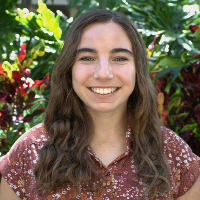

City and County of Honolulu
Chloe works for the City and County of Honolulu’s Office of Climate Change, Sustainability and Resiliency (CCSR) where she serves as the Flood and Resilience Specialist for the Hazard Mitigation and Long-Term Disaster Recovery program.
She holds a masters in Earth Science from the University of Hawai‘i at Mānoa, where she used modelling software to identify locations of storm drainage failure in Waikīkī under scenarios of sea level rise and rainfall. Chloe’s kuleana within CCSR is maintaining and improving the City & County of Honolulu’s participation in the FEMA National Flood Insurance Program’s Community Rating System.

The City and County of Honolulu’s Office of Climate Change, Sustainability and Resiliency (CCSR) works to enhance community resilience against flooding and other natural hazards. One key initiative is improving participation in FEMA’s Community Rating System (CRS), which offers flood insurance discounts for proactive flood risk management. Currently, Honolulu is a CRS Class 8 community, earning a 10% discount on insurance premiums. This presentation will outline best management practices for reducing flood risk beyond current regulations, including stormwater retention and updated design standards. Case studies and a stormwater modeling study in Waikīkī will demonstrate how these strategies can be applied locally to improve flood mitigation efforts and potentially enhance the City’s CRS rating, increasing overall community resilience.
The City and County of Honolulu’s Office of Climate Change, Sustainability and Resiliency (CCSR) works to enhance community resilience against flooding and other natural hazards. One key initiative is improving participation in FEMA’s Community Rating System (CRS), which offers flood insurance discounts for proactive flood risk management. Currently, Honolulu is a CRS Class 8 community, earning a 10% discount on insurance premiums. This presentation will outline best management practices for reducing flood risk beyond current regulations, including stormwater retention and updated design standards. Case studies and a stormwater modeling study in Waikīkī will demonstrate how these strategies can be applied locally to improve flood mitigation efforts and potentially enhance the City’s CRS rating, increasing overall community resilience.
 July 17, 2025 12:30 pm
to
July 17, 2025 12:30 pm
toFAST: Hands-On Stormwater Planning with GIS Tools
This interactive workshop introduces the FAST (Flowpath Assessment and Stormwater Technology) method, allowing participants to model stormwater impacts and green infrastructure solutions in real O‘ahu neighborhoods. Using ArcGIS, LiDAR, and CommunityViz, attendees will explore scenarios and share insights on how this tool can support planning, pollution prevention, and flood mitigation.


Birchline Planning LLC
Juli Beth (JB) Hinds is Principal of Birchline Planning LLC, and a Continuing Lecturer in the Department of Urban Studies & Planning at UC San Diego where she teaches land use planning, urban policy, and planning for sustainable communities.
JB served as a community planning and stormwater utility director for over a decade and has worked as an advisor to the US EPA on green infrastructure and decentralized wastewater systems.
She works as a consultant to the City and County of Honolulu Department of Facility Maintenance, and other local governments and utilities, on ‘anything involving water, land use, and money.” Her focus is on zoning and code updates, green infrastructure, utility management, stormwater and wastewater fees, and incentive programs.
She was the inaugural chair of the Water Environment Federation’s Stormwater Research Symposium and is active in WEF’s Jammin 4 Water charity program. She and her husband Nick spend as much time as possible on boats and love living in San Diego.


Focused Planning Solutions LLC
Amy DeBay is the owner and president of Focused Planning Solutions LLC. Ms. DeBay has over 25 years of professional experience in planning, geodesign, and engineering.
Her company’s mission is to bring together data, technology, and people for more focused plans and better futures. Prior to launching her own firm in 2018, Ms. DeBay served as the Director of Planning Services at Placeways LLC and the Colorado Office Lead at City Explained Inc, the past makers of CommunityViz® software.
In her professional career, she has managed dozens of projects building and customizing scenario planning tools. Her knowledge and ability to create CommunityViz applications and custom decision support tools is second to none. Ms. DeBay has an MSc in City Design and Social Science from the London School of Economics and a BS in Architectural Engineering from Milwaukee School of Engineering.

FAST: Hands-On Stormwater Planning with GIS Tools
This interactive workshop introduces the FAST (Flowpath Assessment and Stormwater Technology) method, allowing participants to model stormwater impacts and green infrastructure solutions in real O‘ahu neighborhoods. Using ArcGIS, LiDAR, and CommunityViz, attendees will explore scenarios and share insights on how this tool can support planning, pollution prevention, and flood mitigation.
FAST: Hands-On Stormwater Planning with GIS Tools
This interactive workshop introduces the FAST (Flowpath Assessment and Stormwater Technology) method, allowing participants to model stormwater impacts and green infrastructure solutions in real O‘ahu neighborhoods. Using ArcGIS, LiDAR, and CommunityViz, attendees will explore scenarios and share insights on how this tool can support planning, pollution prevention, and flood mitigation.
 July 17, 2025 12:30 pm
to
July 17, 2025 12:30 pm
to




 July 17, 2025 01:15 pm
to
July 17, 2025 01:15 pm
to
 July 17, 2025 01:30 pm
to
July 17, 2025 01:30 pm
to

AECOM
Dr. Ming Ding earned a Ph.D. in geotechnical engineering from the University of Hawaii at Manoa in 2000. Dr. Ding currently serves as Design Department Manager for AECOM, Pacific District. Dr. Ding manages a variety of civil engineering projects and supervises 45+ civil engineers.

 July 17, 2025 01:30 pm
to
July 17, 2025 01:30 pm
toThe Surfrider Foundation and The University of Hawaii at Manoa are conducting a survey of water quality impacts to our nearshore environment from extreme weather events. Increased stormwater flow during large rain events often produce brown water in our nearshore. SRF is collecting water quality samples at intervals before, during, and following large storm events to study the impacts to water quality for impacts to both human and ecological health. The Surfrider Foundation has also built a significant rain garden in Kakaako which diverts potentially polluted runoff from a parking lot through a food forest oasis.
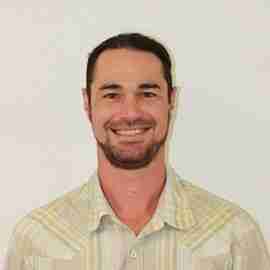

Surfrider Foundation
Dr. Daniel Amato is a water quality specialist working as an environmental scientist with Element Environmental, LLC. Working with all levels of government and private clients, Daniel has gained extensive experience with the implementation and assessment of stormwater BMPs related to construction, post-construction, industrial, and commercial operations.
As affiliate faculty in the Marine Biology Graduate Program at the University of Hawaii at Manoa and coordinator of the Blue Water Task Force for the Surfrider Foundation’s Oahu chapter, Daniel’s current research and volunteer-led work investigates the impact of anthropogenic activity and extreme storm events on coastal water quality and reef health in the nearshore waters of Hawaii.


Element Environmental
Marvin Heskett was raised with sustainability at the heart of family life. He is currently a practicing environmental consultant and an environmental chemist.
Marvin received a B.S. in biochemistry from California Polytechnic San Luis Obispo and has worked as a mass spec. chemist, quality assurance officer, and laboratory director prior to taking on the role of a consultant.
As a consultant he has worked with the State of Hawaii Department of Health in innovating novel approaches to solving environmental problems throughout the Pacific Region. He has practiced stormwater program management for over ten years with an emphasis on improving Hawaii’s water quality.

The Surfrider Foundation and The University of Hawaii at Manoa are conducting a survey of water quality impacts to our nearshore environment from extreme weather events. Increased stormwater flow during large rain events often produce brown water in our nearshore. SRF is collecting water quality samples at intervals before, during, and following large storm events to study the impacts to water quality for impacts to both human and ecological health. The Surfrider Foundation has also built a significant rain garden in Kakaako which diverts potentially polluted runoff from a parking lot through a food forest oasis.
The Surfrider Foundation and The University of Hawaii at Manoa are conducting a survey of water quality impacts to our nearshore environment from extreme weather events. Increased stormwater flow during large rain events often produce brown water in our nearshore. SRF is collecting water quality samples at intervals before, during, and following large storm events to study the impacts to water quality for impacts to both human and ecological health. The Surfrider Foundation has also built a significant rain garden in Kakaako which diverts potentially polluted runoff from a parking lot through a food forest oasis.
 July 17, 2025 01:30 pm
to
July 17, 2025 01:30 pm
toEffective stormwater management requires a comprehensive approach that integrates the selection, installation, and maintenance of BMPs. By considering site-specific factors, employing best practices in installation, and committing to regular maintenance, we can maximize the effectiveness of BMPs and significantly reduce the adverse impacts of stormwater runoff. This presentation aims to equip participants with the knowledge and tools necessary to implement and sustain successful stormwater BMPs, ultimately contributing to healthier and more resilient environments.


Laulea Engineering
Doug Williams is a registered professional engineer specializing in the areas of civil and environmental engineering. Doug is currently the Director of Engineering at Laulea Engineering.
Doug’s storm water experience includes research and development, hydrology, hydraulics, design, permitting, and regulatory compliance. With Doug’s efforts towards erosion control and storm water pollution prevention, he’s excited to play a role in mitigating the impacts of polluted runoff to receiving waters in Hawaii.

Effective stormwater management requires a comprehensive approach that integrates the selection, installation, and maintenance of BMPs. By considering site-specific factors, employing best practices in installation, and committing to regular maintenance, we can maximize the effectiveness of BMPs and significantly reduce the adverse impacts of stormwater runoff. This presentation aims to equip participants with the knowledge and tools necessary to implement and sustain successful stormwater BMPs, ultimately contributing to healthier and more resilient environments.
Effective stormwater management requires a comprehensive approach that integrates the selection, installation, and maintenance of BMPs. By considering site-specific factors, employing best practices in installation, and committing to regular maintenance, we can maximize the effectiveness of BMPs and significantly reduce the adverse impacts of stormwater runoff. This presentation aims to equip participants with the knowledge and tools necessary to implement and sustain successful stormwater BMPs, ultimately contributing to healthier and more resilient environments.
 July 17, 2025 02:15 pm
to
July 17, 2025 02:15 pm
to
 July 17, 2025 02:30 pm
to
July 17, 2025 02:30 pm
to

Birchline Planning LLC
Juli Beth (JB) Hinds is Principal of Birchline Planning LLC, and a Continuing Lecturer in the Department of Urban Studies & Planning at UC San Diego where she teaches land use planning, urban policy, and planning for sustainable communities.
JB served as a community planning and stormwater utility director for over a decade and has worked as an advisor to the US EPA on green infrastructure and decentralized wastewater systems.
She works as a consultant to the City and County of Honolulu Department of Facility Maintenance, and other local governments and utilities, on ‘anything involving water, land use, and money.” Her focus is on zoning and code updates, green infrastructure, utility management, stormwater and wastewater fees, and incentive programs.
She was the inaugural chair of the Water Environment Federation’s Stormwater Research Symposium and is active in WEF’s Jammin 4 Water charity program. She and her husband Nick spend as much time as possible on boats and love living in San Diego.


Jacobs
Laurens van der Tak is a water resources engineer with more than 34 years of experience including supporting the City and County of Honolulu over the last 6 years.
Laurens helps public and private clients to address stormwater and water resource issues including climate vulnerability assessments and adaptation, green stormwater infrastructure, flood and sewer system modeling, water supply planning modeling and user-fee-funded stormwater utility enterprises.
Laurens is a native of Washington, DC, based out of Jacobs’ Silver Spring, MD office, also serving as the Americas Water Resilience Director for Jacobs.


AECOM
Dr. Ming Ding earned a Ph.D. in geotechnical engineering from the University of Hawaii at Manoa in 2000. Dr. Ding currently serves as Design Department Manager for AECOM, Pacific District. Dr. Ding manages a variety of civil engineering projects and supervises 45+ civil engineers.


Department of Facility Maintenance, City and County of Honolulu
Randall Wakumoto is the Program Administrator for the City and County of Honolulu’s Storm Water Quality Division within its Department of Facility Maintenance. He has 28 years of engineering work experience with the City and County of Honolulu and has a Bachelor of Science’s degree in Civil Engineering from Santa Clara University.
He also possesses a professional engineer’s license in the State of Hawaii. His responsibilities involve administering the City’s storm water management program which includes coordinating with the various City departments to ensure compliance under the Federal Clean Water Act requirements.
He oversees a group of engineers, planners, environmental technicians and community relations specialists that perform various types of inspections, enforcement, water quality sampling and monitoring, public education, outreach and training. In addition, the division is involved in managing and implementing a number of Capital Improvement Program (CIP) projects focused on improving water quality.

 July 18, 2025 08:00 am
to
July 18, 2025 08:00 am
to

One World One Water company founder and owner Christin Reynolds’ expertise includes policy, engineering, mapping, and modeling. As a specialist in coastal and water management issues, she has provided/provides support for federal and local governments in Hawai‘i and American Samoa.
With over two decades of professional experience in Geographic Information Systems, water resources, project management, and engineering, her career spans the public and private sectors. A Rotary ambassadorial scholar, Christin holds a master’s degree in engineering and policy analysis from the Technische Universiteit Delft in the Netherlands and Harbin Institute of Technology in Harbin, China.
She received her bachelor’s degree in civil and environmental engineering from Worcester Polytechnic Institute in Massachusetts.


Roger Babcock Jr., PhD, PE is the Director, Department of Environmental Services (ENV) for the City and County of Honolulu a position he began in January 2022. In 2021, he was the City’s Chief Engineer and Director of the Department of Facility Maintenance and served on the Honolulu Board of Water Supply.
He obtained his Ph.D. in Civil Engineering from UCLA in 1991, worked as a consultant in California, and then as a Professor of Civil Engineering at the University of Hawaii at Manoa from 1995 to 2020. He has Professional Engineering licenses in California and Hawaii.
Dr. Babcock conducted research on a wide variety of water/wastewater/stormwater topics during his 25 years at UH and advised 85 Master’s and PhD students. He is a past president of the Hawaii Section of ASCE and the Hawaii Water Environment Association, and was the 2019 Engineer of the Year for Hawaii and in 2024 for ASCE Region 8.
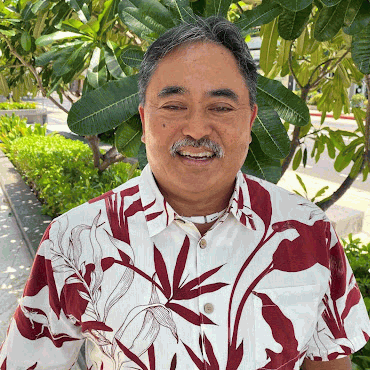

Barry Usagawa P.E. is the Program Administrator for the Water Resources Division Honolulu Board of Water Supply with 40 years of service at BWS. Water Resources conducts long-range water resource and capital planning for Oahu to ensure sustainable water resources and dependable water systems. Barry is the project manager for the One Water Honolulu climate change adaptation and projects plan.


Noelle is the Branch Chief for Policy Planning in the Honolulu Department of Planning and Permitting’s Planning Division where she manages long range planning documents including the Oʻahu General Plan and the Primary Urban Center Development Plan, among other duties.
She is an active participant in the City’s One Water Panel and is currently leading the DPP’s Adapt Waikīkī 2050 project team, working across departments and with the development community to achieve greater climate resilience in the Waikīkī Special Design District.
Noelle holds M.C.P. and M.L.A. degrees from U.C. Berkeley, and worked as a planner in the California Bay Area prior to joining the City and County of Honolulu in 2015.




Department of Facility Maintenance, City and County of Honolulu
Randall Wakumoto is the Program Administrator for the City and County of Honolulu’s Storm Water Quality Division within its Department of Facility Maintenance. He has 28 years of engineering work experience with the City and County of Honolulu and has a Bachelor of Science’s degree in Civil Engineering from Santa Clara University.
He also possesses a professional engineer’s license in the State of Hawaii. His responsibilities involve administering the City’s storm water management program which includes coordinating with the various City departments to ensure compliance under the Federal Clean Water Act requirements.
He oversees a group of engineers, planners, environmental technicians and community relations specialists that perform various types of inspections, enforcement, water quality sampling and monitoring, public education, outreach and training. In addition, the division is involved in managing and implementing a number of Capital Improvement Program (CIP) projects focused on improving water quality.
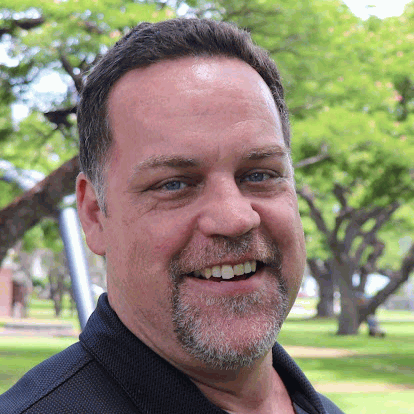

Ben Sullivan is the Executive Director for the Office of Climate Change, Sustainability and Resiliency (Resilience Office). He has over a decade of experience in government including time as the Deputy Director and Energy Program Manager for the Resilience Office, and 10 years as the Energy and Sustainability Coordinator for Kauaʻi County.
Ben’s early career included fifteen years in architecture & green building in Denver and Hawaiʻi. His work in climate began as a community-based clean energy advocate on Kauaʻi, followed by a term on the Kauaʻi Island Utility Cooperative Board of Directors from 2009-2011.
Ben has not owned a car for ten years, and enjoys Oʻahu’s robust public transit system to get around on Oʻahu.

 July 18, 2025 09:00 am
to
July 18, 2025 09:00 am
to
 July 18, 2025 09:30 am
to
July 18, 2025 09:30 am
toThe South Kohala District on Hawaii Island faces significant flood risks due to intense rainfall and urban development, overwhelming flood protection infrastructure. This presentation focuses on a comprehensive flood study by Brown and Caldwell for the County of Hawaii Department of Public Works, with an emphasis on community involvement. The study assesses current hydrologic and hydraulic conditions to develop effective flood control strategies. Key aspects include updating flood boundaries, advanced modeling to predict flood extents, and the invaluable contributions of local residents who provided videos, photos, and written testimony to aid in model calibration and identify flood-prone areas. The study also evaluates potential flood control measures, considering feasibility, cultural impact, and costs, to develop sustainable mitigation solutions.
This presentation will offer valuable insights into the challenges and innovative solutions for flood management in the region, showcasing the importance of comprehensive planning and community involvement in mitigating flood risks.


Brown and Caldwell
Michelle is a senior environmental professional who has been managing multidisciplinary projects for public and private sector clients for more than two decades. Passionate about water in all forms, her experience extends beyond the technical to encompass the holistic project lifestyle.
She has navigated diverse elements such as water policy, financing, community relations, cultural and environmental resources conservation, and evolving regulatory landscapes to successfully guide programs from concept to completion.


Brown and Caldwell
Jaren is Brown and Caldwell’s Pacific Area Water Resources Practice leader. Jaren’s experience includes traditional civil work such as grading/site design and infrastructure design.
He has worked on projects involving community-wide urban hydrologic/hydraulic (H/H) drainage and water quality analyses, best management practice (BMP) planning and design including both grey and green infrastructure, hydraulic control structure modeling and design, riverine flood analysis, streambank erosion assessment and stabilization design, riparian habitat restoration, and dam removal.
Jaren is also experienced in regulatory permitting, grant funding, and public outreach.

The South Kohala District on Hawaii Island faces significant flood risks due to intense rainfall and urban development, overwhelming flood protection infrastructure. This presentation focuses on a comprehensive flood study by Brown and Caldwell for the County of Hawaii Department of Public Works, with an emphasis on community involvement. The study assesses current hydrologic and hydraulic conditions to develop effective flood control strategies. Key aspects include updating flood boundaries, advanced modeling to predict flood extents, and the invaluable contributions of local residents who provided videos, photos, and written testimony to aid in model calibration and identify flood-prone areas. The study also evaluates potential flood control measures, considering feasibility, cultural impact, and costs, to develop sustainable mitigation solutions.
This presentation will offer valuable insights into the challenges and innovative solutions for flood management in the region, showcasing the importance of comprehensive planning and community involvement in mitigating flood risks.
The South Kohala District on Hawaii Island faces significant flood risks due to intense rainfall and urban development, overwhelming flood protection infrastructure. This presentation focuses on a comprehensive flood study by Brown and Caldwell for the County of Hawaii Department of Public Works, with an emphasis on community involvement. The study assesses current hydrologic and hydraulic conditions to develop effective flood control strategies. Key aspects include updating flood boundaries, advanced modeling to predict flood extents, and the invaluable contributions of local residents who provided videos, photos, and written testimony to aid in model calibration and identify flood-prone areas. The study also evaluates potential flood control measures, considering feasibility, cultural impact, and costs, to develop sustainable mitigation solutions.
This presentation will offer valuable insights into the challenges and innovative solutions for flood management in the region, showcasing the importance of comprehensive planning and community involvement in mitigating flood risks.
 July 18, 2025 09:30 am
to
July 18, 2025 09:30 am
toIn response to the Federal Facilities Compliance Agreement (FFCA) with the EPA, the United States Marine Corps Base Hawaii (MCBH) evaluated recent development projects for Post-Construction BMP retrofits. The FFCA requires an inventory of projects completed since October 15, 2014, involving ground-disturbing activities, detailing factors like location, impervious area, stormwater pathways, and BMPs. Projects lacking BMPs were assessed for retrofit feasibility based on water quality, sustainability, cost, and potential impacts. A ranking system was developed to score 25 projects suitable for retrofitting, scoring over 50 out of 100 points. This presentation will cover the methodology, ranking system, and retrofit options to improve water quality and enhance sustainability for MCBH’s future development.


Marine Corps Base Hawaii
In 2023 Katy Smith joined the Marine Corps Base Hawaii Environmental Compliance and Protection Division as the Program manager for the Storm water and Air programs, she serves as one of installation’s environmental engineers and is primarily responsible for the Storm Water permit and program ensuring the base’s environmental compliance with Federal, State, and local laws.
Ms. Smith earned a B.A. in Environmental Systems, with a focus in environmental policy from University of California San Diego in 2023. She has over 10 years of experience in the environmental field, including writing environmental policies, conducting environmental site assessments, investigations, and cleanups.
Ms. Smith was the in United States Marine Corps for 12 years, the last three of which she spent as the Ground Safety Officer for Marine Aircraft Group 13 managing the safety and environmental programs.

In response to the Federal Facilities Compliance Agreement (FFCA) with the EPA, the United States Marine Corps Base Hawaii (MCBH) evaluated recent development projects for Post-Construction BMP retrofits. The FFCA requires an inventory of projects completed since October 15, 2014, involving ground-disturbing activities, detailing factors like location, impervious area, stormwater pathways, and BMPs. Projects lacking BMPs were assessed for retrofit feasibility based on water quality, sustainability, cost, and potential impacts. A ranking system was developed to score 25 projects suitable for retrofitting, scoring over 50 out of 100 points. This presentation will cover the methodology, ranking system, and retrofit options to improve water quality and enhance sustainability for MCBH’s future development.
In response to the Federal Facilities Compliance Agreement (FFCA) with the EPA, the United States Marine Corps Base Hawaii (MCBH) evaluated recent development projects for Post-Construction BMP retrofits. The FFCA requires an inventory of projects completed since October 15, 2014, involving ground-disturbing activities, detailing factors like location, impervious area, stormwater pathways, and BMPs. Projects lacking BMPs were assessed for retrofit feasibility based on water quality, sustainability, cost, and potential impacts. A ranking system was developed to score 25 projects suitable for retrofitting, scoring over 50 out of 100 points. This presentation will cover the methodology, ranking system, and retrofit options to improve water quality and enhance sustainability for MCBH’s future development.
 July 18, 2025 09:30 am
to
July 18, 2025 09:30 am
toInnovative Capillary Stormwater System: Passive, Sustainable, Resilient
Discover a cutting-edge stormwater system that captures, stores, and reuses water using natural capillary action—no pumps needed. With 95% void space, this passive design supports green infrastructure, reduces runoff, and enhances drought and heat resilience. Learn how it integrates into diverse landscapes to create a more sustainable urban water cycle.


ABT Drains
After graduating with a Bachelor of Science in Chemical Engineering, Reagan Rouble relocated to Denver, CO where she earned her EIT certification and began working for ABT, Inc., a leading manufacturer of stormwater management systems, as a Water Resource Engineer for the Western US. This role has allowed her to expand on her passion for sustainability and design by consulting with design professionals on innovative stormwater solutions, emphasizing water conservation, green infrastructure, and LID.

Innovative Capillary Stormwater System: Passive, Sustainable, Resilient
Discover a cutting-edge stormwater system that captures, stores, and reuses water using natural capillary action—no pumps needed. With 95% void space, this passive design supports green infrastructure, reduces runoff, and enhances drought and heat resilience. Learn how it integrates into diverse landscapes to create a more sustainable urban water cycle.
Innovative Capillary Stormwater System: Passive, Sustainable, Resilient
Discover a cutting-edge stormwater system that captures, stores, and reuses water using natural capillary action—no pumps needed. With 95% void space, this passive design supports green infrastructure, reduces runoff, and enhances drought and heat resilience. Learn how it integrates into diverse landscapes to create a more sustainable urban water cycle.
 July 18, 2025 10:00 am
to
July 18, 2025 10:00 am
to
 July 18, 2025 10:15 am
to
July 18, 2025 10:15 am
toAla Wai Watershed: Targeting Flood Risk with Green Infrastructure
This presentation highlights a collaborative effort to reduce flood risk in Honolulu’s Ala Wai Watershed, where a major storm could impact 3,000+ properties and cost $318M in damages. With nearly half of residents below the ALICE threshold, the project uses GIS-based modeling to identify high-impact locations for green stormwater infrastructure (GSI) on private properties—especially in vulnerable communities. Learn how this initiative is driving change through data-driven strategies and free “stormwater housecalls.”


3Rwater
Lauren Roth Venu is an ecopreneur, a TEDx speaker and published author, who is deeply committed to deploying innovative solutions for climate resiliency.In 2006, she formed Roth Ecological Design International to address the disparity between development practices and the preservation of ecological and water systems through the design of regenerative solutions to manage water.
Her continued passion for greening urban centers drove her to form 3Rwater which developed the Follow the Drop mobile app and data platform that helps cities and citizens collect stormwater data while also activating communities to become climate-prepared by increasing access to green infrastructure solutions and being storm prepared.
Some of Lauren’s accolades include being named Top Emerging Designers by Pacific Edge Magazine, Top 40 under 40 by Pacific Business News, and finalist for Entrepreneur of the Year for Clean Tech. She is also serving as a Founding Advisor to the World Bank Youth Water Accelerator program as well as continues to serve in public service advisory roles to support sustainability in global ecosystems and communities.

Ala Wai Watershed: Targeting Flood Risk with Green Infrastructure
This presentation highlights a collaborative effort to reduce flood risk in Honolulu’s Ala Wai Watershed, where a major storm could impact 3,000+ properties and cost $318M in damages. With nearly half of residents below the ALICE threshold, the project uses GIS-based modeling to identify high-impact locations for green stormwater infrastructure (GSI) on private properties—especially in vulnerable communities. Learn how this initiative is driving change through data-driven strategies and free “stormwater housecalls.”
Ala Wai Watershed: Targeting Flood Risk with Green Infrastructure
This presentation highlights a collaborative effort to reduce flood risk in Honolulu’s Ala Wai Watershed, where a major storm could impact 3,000+ properties and cost $318M in damages. With nearly half of residents below the ALICE threshold, the project uses GIS-based modeling to identify high-impact locations for green stormwater infrastructure (GSI) on private properties—especially in vulnerable communities. Learn how this initiative is driving change through data-driven strategies and free “stormwater housecalls.”
 July 18, 2025 10:15 am
to
July 18, 2025 10:15 am
toCDM Smith collaborated with Los Angeles County Public Works to develop a Green Streets Master Plan (GSMP) for unincorporated areas, identifying 110 sites for green infrastructure retrofits to meet MS4 permit requirements. Using GIS analysis and hydrologic modeling, 5 signature projects were selected to serve as examples for implementation. Preliminary designs included a variety of Best Management Practices (BMPs) like bioretention, pervious pavement, and underground facilities, tailored to different geological conditions. Additionally, CDM Smith supported the City of Los Angeles with stormwater diversion projects for the Stormwater Capture Parks Program, incorporating sustainable elements such as permeable pavement, solar grids, and EV charging stations. The projects aimed to improve water quality, recharge groundwater, and provide community benefits. This presentation highlights green street site screening, selection, design, and how parks can serve as green infrastructure, offering multiple benefits to communities.


CDM Smith
Russ Vadenais is a water resources engineer with eighteen years of experience in stormwater management practices including drainage design, green stormwater infrastructure, water quality protection, erosion control, stormwater treatment, and stormwater guidance manual development.
He is experienced in low impact development (LID), hydrologic, hydraulic, and water quality modeling, pollutant source control, water quality sampling and data analysis, and BMP performance monitoring. Russ is a registered Civil Engineer in the States of California and Nevada and a Project Technical Leader for CDM Smith.

CDM Smith collaborated with Los Angeles County Public Works to develop a Green Streets Master Plan (GSMP) for unincorporated areas, identifying 110 sites for green infrastructure retrofits to meet MS4 permit requirements. Using GIS analysis and hydrologic modeling, 5 signature projects were selected to serve as examples for implementation. Preliminary designs included a variety of Best Management Practices (BMPs) like bioretention, pervious pavement, and underground facilities, tailored to different geological conditions. Additionally, CDM Smith supported the City of Los Angeles with stormwater diversion projects for the Stormwater Capture Parks Program, incorporating sustainable elements such as permeable pavement, solar grids, and EV charging stations. The projects aimed to improve water quality, recharge groundwater, and provide community benefits. This presentation highlights green street site screening, selection, design, and how parks can serve as green infrastructure, offering multiple benefits to communities.
CDM Smith collaborated with Los Angeles County Public Works to develop a Green Streets Master Plan (GSMP) for unincorporated areas, identifying 110 sites for green infrastructure retrofits to meet MS4 permit requirements. Using GIS analysis and hydrologic modeling, 5 signature projects were selected to serve as examples for implementation. Preliminary designs included a variety of Best Management Practices (BMPs) like bioretention, pervious pavement, and underground facilities, tailored to different geological conditions. Additionally, CDM Smith supported the City of Los Angeles with stormwater diversion projects for the Stormwater Capture Parks Program, incorporating sustainable elements such as permeable pavement, solar grids, and EV charging stations. The projects aimed to improve water quality, recharge groundwater, and provide community benefits. This presentation highlights green street site screening, selection, design, and how parks can serve as green infrastructure, offering multiple benefits to communities.
 July 18, 2025 10:15 am
to
July 18, 2025 10:15 am
toSmart Ways to Reduce Outdoor Water Use
Learn how simple steps—like fixing leaks, installing rain barrels, and using smart irrigation—can help homeowners cut outdoor water use by up to 15%, saving money and protecting our streams and ocean from pollution and runoff.


Honolulu Board of Water Supply
Steven Norstrom serves as an Information Specialist with the Honolulu Board of Water Supply (BWS). Since joining the BWS in 2019, he has worked to build strong partnerships with government agencies and community organizations to raise public awareness about the importance of water conservation. He helped launch targeted educational outreach programs for large residential condominiums and communities—some of the most challenging properties to reach—and continues to explore innovate strategies to promote water sustainability. Driven by a deep passion for responsible stewardship of Oʻahu’s fresh drinking water, Steven empowers residents and businesses to take action in protecting this most vital and finite resource.


Honolulu Board of Water Supply
Dane Perrott is a Civil Engineer with the Honolulu Board of Water Supply, where he has worked for over three years in the Water Resources Division under the Water Conservation Section. His work includes supporting recycled water operations in the ʻEwa area, helping advance sustainable water use across the region. Dane is a graduate of Iolani and holds a Bachelor of Marine and Offshore Engineering (Honours) from the Australian Maritime College in Tasmania and brings a practical, solutions-driven approach to water resource management.

Smart Ways to Reduce Outdoor Water Use
Learn how simple steps—like fixing leaks, installing rain barrels, and using smart irrigation—can help homeowners cut outdoor water use by up to 15%, saving money and protecting our streams and ocean from pollution and runoff.
Smart Ways to Reduce Outdoor Water Use
Learn how simple steps—like fixing leaks, installing rain barrels, and using smart irrigation—can help homeowners cut outdoor water use by up to 15%, saving money and protecting our streams and ocean from pollution and runoff.
 July 18, 2025 10:45 am
to
July 18, 2025 10:45 am
to
 July 18, 2025 11:00 am
to
July 18, 2025 11:00 am
toAfter a 20-minute presentation and hands-on app demonstration, participants will learn how to download and use the app to accurately measure their home’s rainwater footprint. They’ll gain the knowledge to determine the optimal size and type of Green Stormwater Infrastructure (GSI) for their property, and will be able to complete their rainwater assessment independently once they return home


Hawaiʻi Green Growth
Cyrus Howe serves as HGG’s Operations Manager and leads project development for the Ala Wai Watershed Collaboration (AWWC). Born and raised in Seattle, Cyrus received his Bachelor of Arts in political science from the University of Washington where he studied community-based ecotourism abroad in Northern Thailand.
While pursuing his MA in global leadership and sustainable development at Hawaiʻi Pacific University, Cyrus served as Kupu’s EPA Food Waste and Emissions Reductions Fellow. As a senior consultant at Blue Zones Project Hawaiʻi, Cyrus worked with local organizations across diverse sectors and industries to co-lead and develop their well-being programs.
Cyrus earned his MBA from the University of Wisconsin–Eau Claire in 2021 and serves on Makiki Community Garden’s board of directors. He's now working with a variety of partners to mitigate flood risk, brown water runoff, and poor aquifer charge in the Ala Wai Watershed.


3Rwater
Lauren Roth Venu is an ecopreneur, a TEDx speaker and published author, who is deeply committed to deploying innovative solutions for climate resiliency.In 2006, she formed Roth Ecological Design International to address the disparity between development practices and the preservation of ecological and water systems through the design of regenerative solutions to manage water.
Her continued passion for greening urban centers drove her to form 3Rwater which developed the Follow the Drop mobile app and data platform that helps cities and citizens collect stormwater data while also activating communities to become climate-prepared by increasing access to green infrastructure solutions and being storm prepared.
Some of Lauren’s accolades include being named Top Emerging Designers by Pacific Edge Magazine, Top 40 under 40 by Pacific Business News, and finalist for Entrepreneur of the Year for Clean Tech. She is also serving as a Founding Advisor to the World Bank Youth Water Accelerator program as well as continues to serve in public service advisory roles to support sustainability in global ecosystems and communities.

After a 20-minute presentation and hands-on app demonstration, participants will learn how to download and use the app to accurately measure their home’s rainwater footprint. They’ll gain the knowledge to determine the optimal size and type of Green Stormwater Infrastructure (GSI) for their property, and will be able to complete their rainwater assessment independently once they return home
After a 20-minute presentation and hands-on app demonstration, participants will learn how to download and use the app to accurately measure their home’s rainwater footprint. They’ll gain the knowledge to determine the optimal size and type of Green Stormwater Infrastructure (GSI) for their property, and will be able to complete their rainwater assessment independently once they return home
 July 18, 2025 11:00 am
to
July 18, 2025 11:00 am
to

ADS
Colin Steer is a Field Engineer for ADS covering the states of Hawaii, Oregon, Washington. He leads field design and stormwater Best Management Practices for the Pacific Northwest sales team.
Colin has conducted similar training for civil engineers across the Pacific Northwest. He graduated from Arizona State University in 2016 with a BSME in Mechanical Engineering with a focus on Computational Fluid Dynamics.

 July 18, 2025 11:00 am
to
July 18, 2025 11:00 am
toThis presentation will explore the evolution of Green Stormwater Infrastructure (GSI), focusing on its development in Hawaii and beyond. It will highlight how GSI has adapted to regulatory, environmental, and climatic changes over time, with a focus on long-term sustainability, maintenance, and resilience. The session will showcase examples from Hawaii and other U.S. regions, comparing past designs to modern, innovative solutions. Key developments, such as the CCH DPW GSI Details and the Hawaii Statewide LID manual update, will be discussed to inspire future GSI design choices and implementations.


Bowers and Kubota
Mr. Stone is Bowers + Kubota Consulting’s Principal-in-Charge of Civil Engineering. With over 31 years of experience, Mr. Stone’s design expertise includes stormwater treatment and inspections, ecosystem restoration, wastewater collection and treatment, water treatment and supply systems, and drainage improvements. He also has extensive experience in environmental permit processes at federal, state and county levels as related to waterfront projects, including Department of the Army permits, Section 401 Water Quality Certification, National Pollutant Discharge Elimination System permits, and resource agency (NOAA, USFWS, SHPD, DLNR-DAR and DOFAW) consultations. He holds bachelor’s degrees in English and Civil Engineering from the University of Notre Dame and is a licensed civil engineer in Hawai‘i. He is also a board-certified environmental engineer in water supply and wastewater with the American Academy of Environmental Engineers and Scientists, Certified Floodplain Manager, Certified Professional in Erosion and Sediment Control, and LEED Accredited Professional. He is a former instructor with the University of Hawai‘i Outreach Program Water Technology Education Program. A practitioner of aikido since 1988, Mr. Stone teaches children, teenagers, and adults at the Kaonohi Zanshin Aikido dojo, which meets Saturdays at the Kalihi YMCA. He is also a former podcaster on ComicsViews (http://comicsviews.com/), discussing comics, film, and television pop culture.


Jacobs
Keo is a water resources engineer at Jacobs, with 8 years of experience in Hawaii providing professional engineering and consulting services, delivering and managing stormwater, MS4, GSI, water and wastewater utility and infrastructure projects and programs. Keo works with the City and County of Honolulu’s Storm Water Program to develop GSI Details and training for the public and City staff.


Jacobs
Dustin serves as Jacobs’ Global Technology Lead for Stormwater and Watershed Management, with over 24 years of experience (16+ at Jacobs/CH2M) in water resources and stormwater management.
Dustin integrates green infrastructure with grey solutions that work for clients, protect the environment, and enhance communities, through the development of master plans, guidelines, education and implementation of stormwater solutions.
Dustin also enjoys applying his skillset to ecosystem restoration projects including stream and wetland restoration and culvert fish passage replacement projects. Outside of work Dustin is typically finding ways to play on or around water.


Jacobs
Tiffany is a water resources engineer and senior project/program manager at Jacobs, with over 25 years experience across the US (including supporting projects in Hawaii over the last 9 years) providing professional engineering and consulting, leading teams developing, delivering, and managing stormwater, MS4, GSI, water quality and wastewater infrastructure projects and programs.
Tiffany works with the City and County of Honolulu’s Storm Water Program developing and maintaining tailored technical resources and training for the roles and needs of public and private project managers, engineers, inspectors, construction managers, municipal maintenance workers, plans reviewers, and others.

This presentation will explore the evolution of Green Stormwater Infrastructure (GSI), focusing on its development in Hawaii and beyond. It will highlight how GSI has adapted to regulatory, environmental, and climatic changes over time, with a focus on long-term sustainability, maintenance, and resilience. The session will showcase examples from Hawaii and other U.S. regions, comparing past designs to modern, innovative solutions. Key developments, such as the CCH DPW GSI Details and the Hawaii Statewide LID manual update, will be discussed to inspire future GSI design choices and implementations.
This presentation will explore the evolution of Green Stormwater Infrastructure (GSI), focusing on its development in Hawaii and beyond. It will highlight how GSI has adapted to regulatory, environmental, and climatic changes over time, with a focus on long-term sustainability, maintenance, and resilience. The session will showcase examples from Hawaii and other U.S. regions, comparing past designs to modern, innovative solutions. Key developments, such as the CCH DPW GSI Details and the Hawaii Statewide LID manual update, will be discussed to inspire future GSI design choices and implementations.
 July 18, 2025 11:30 am
to
July 18, 2025 11:30 am
to
 July 18, 2025 12:30 pm
to
July 18, 2025 12:30 pm
toThe One Water approach views the water cycle as an integrated system, considering all water flows as potential resources. A comprehensive stormwater management strategy addresses wet weather flows from source to receiving water, incorporating performance, life cycle costs, and benefits of best management practices (BMPs). The Water Research Foundation (WRF) leads stormwater research, including the BMP Database, offering data on over 800 BMPs. The WRF-developed CLASIC tool helps evaluate stormwater infrastructure across various U.S. climates, assessing hydrologic performance, costs, and benefits. Additionally, the growing trend of stormwater capture and use (SCU) is explored, with studies highlighting its role in building water resilience.
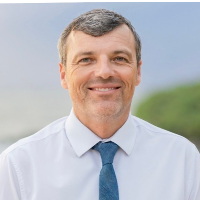

CDM Smith
Jon Lowry has over 23 years of experience developing and implementing innovative solutions for water resource projects and programs. He specializes in stormwater management, hydrologic assessment, and design of low impact development (LID) and non-LID stormwater treatment Best Management Practices (BMPs).
He also has extensive experience with the development and implementation of stormwater management programs for National Pollutant Discharge Elimination System (NPDES) municipal separate storm sewer system (MS4) permit compliance.
Mr. Lowry’s other areas of engineering practice includes potable water and sewer system planning and design, construction management, asset management systems, MS4 maintenance programs, watershed studies, and environmental permitting and compliance.


CDM Smith
Rhea Quezon is an Environmental Engineer at CDM Smith with over three years of experience in water resource planning. Her work includes a wide range of projects, such as developing source water protection strategies, integrated master plans, emergency response procedures, utility rate adjustments, and ensuring stormwater compliance. She received a Bachelor of Science in Environmental Science from the University of San Francisco, and she also holds a Master of Science in Environmental Engineering with a Focus in Hydrology and Water Resources from Stanford University.

The One Water approach views the water cycle as an integrated system, considering all water flows as potential resources. A comprehensive stormwater management strategy addresses wet weather flows from source to receiving water, incorporating performance, life cycle costs, and benefits of best management practices (BMPs). The Water Research Foundation (WRF) leads stormwater research, including the BMP Database, offering data on over 800 BMPs. The WRF-developed CLASIC tool helps evaluate stormwater infrastructure across various U.S. climates, assessing hydrologic performance, costs, and benefits. Additionally, the growing trend of stormwater capture and use (SCU) is explored, with studies highlighting its role in building water resilience.
The One Water approach views the water cycle as an integrated system, considering all water flows as potential resources. A comprehensive stormwater management strategy addresses wet weather flows from source to receiving water, incorporating performance, life cycle costs, and benefits of best management practices (BMPs). The Water Research Foundation (WRF) leads stormwater research, including the BMP Database, offering data on over 800 BMPs. The WRF-developed CLASIC tool helps evaluate stormwater infrastructure across various U.S. climates, assessing hydrologic performance, costs, and benefits. Additionally, the growing trend of stormwater capture and use (SCU) is explored, with studies highlighting its role in building water resilience.
 July 18, 2025 12:30 pm
to
July 18, 2025 12:30 pm
toNew Orleans faces significant flooding challenges due to its geography, climate, aging infrastructure, and rising threats like sea-level rise and extreme precipitation. A current study focuses on integrating blue-green stormwater infrastructure (BGSI) with traditional grey infrastructure to manage flooding in the Lakeview, Lake Vista, and Lake Shore neighborhoods. The study uses hydrologic and hydraulic modeling to assess flood risk and identify priority areas.
A BGSI toolbox was developed in collaboration with city partners, incorporating practices like wet ponds, dry detention basins, underground detention, bioretention areas, and permeable pavements. These solutions aim to reduce flooding, improve water quality, and mitigate urban heat islands. This approach exemplifies how combining nature-based and traditional solutions can enhance urban resilience and adaptability in the face of future flooding challenges.
Key learning objectives include understanding how to integrate BGSI with traditional systems, evaluate and prioritize flood risk reduction projects, and optimize community impact, partnership opportunities, hydraulic benefits, and cost-effectiveness.


Jacobs
Dustin serves as Jacobs’ Global Technology Lead for Stormwater and Watershed Management, with over 24 years of experience (16+ at Jacobs/CH2M) in water resources and stormwater management.
Dustin integrates green infrastructure with grey solutions that work for clients, protect the environment, and enhance communities, through the development of master plans, guidelines, education and implementation of stormwater solutions.
Dustin also enjoys applying his skillset to ecosystem restoration projects including stream and wetland restoration and culvert fish passage replacement projects. Outside of work Dustin is typically finding ways to play on or around water.


Jacobs
Emily Stone is an environmental scientist and planner with Jacobs with experience in project planning and development, education and outreach, and community engagement. She works with the City and County of Honolulu Storm Water Quality Division to develop storm water education and training to the public and City staff. Emily enjoys working towards environmental and sustainable solutions aligned with community needs in Hawaii.

New Orleans faces significant flooding challenges due to its geography, climate, aging infrastructure, and rising threats like sea-level rise and extreme precipitation. A current study focuses on integrating blue-green stormwater infrastructure (BGSI) with traditional grey infrastructure to manage flooding in the Lakeview, Lake Vista, and Lake Shore neighborhoods. The study uses hydrologic and hydraulic modeling to assess flood risk and identify priority areas.
A BGSI toolbox was developed in collaboration with city partners, incorporating practices like wet ponds, dry detention basins, underground detention, bioretention areas, and permeable pavements. These solutions aim to reduce flooding, improve water quality, and mitigate urban heat islands. This approach exemplifies how combining nature-based and traditional solutions can enhance urban resilience and adaptability in the face of future flooding challenges.
Key learning objectives include understanding how to integrate BGSI with traditional systems, evaluate and prioritize flood risk reduction projects, and optimize community impact, partnership opportunities, hydraulic benefits, and cost-effectiveness.
New Orleans faces significant flooding challenges due to its geography, climate, aging infrastructure, and rising threats like sea-level rise and extreme precipitation. A current study focuses on integrating blue-green stormwater infrastructure (BGSI) with traditional grey infrastructure to manage flooding in the Lakeview, Lake Vista, and Lake Shore neighborhoods. The study uses hydrologic and hydraulic modeling to assess flood risk and identify priority areas.
A BGSI toolbox was developed in collaboration with city partners, incorporating practices like wet ponds, dry detention basins, underground detention, bioretention areas, and permeable pavements. These solutions aim to reduce flooding, improve water quality, and mitigate urban heat islands. This approach exemplifies how combining nature-based and traditional solutions can enhance urban resilience and adaptability in the face of future flooding challenges.
Key learning objectives include understanding how to integrate BGSI with traditional systems, evaluate and prioritize flood risk reduction projects, and optimize community impact, partnership opportunities, hydraulic benefits, and cost-effectiveness.
 July 18, 2025 12:30 pm
to
July 18, 2025 12:30 pm
toThis session covers MS4 training requirements, focusing on who needs training, what content is required, and the training needs for each Minimum Control Measure (MCM). MS4s must train municipal employees, construction contractors, industrial site owners, and the public. Training can be difficult to manage due to its time-consuming nature, high costs, and tracking challenges. With modern Learning Management System (LMS) technology and stormwater-specific content from NMSA, cities can streamline the process, ensure compliance, and make training more efficient. This session will discuss how to save time, reduce costs, and easily track training for all required groups.


Brown and Caldwell
Gary Skipper is the National Specialty Leader for Condition Assessment and Rehabilitation for Brown and Caldwell’s Conveyance Infrastructure Technical Practice.
He works with Brown and Caldwell teams and clients to develop creative, cost-effective approaches to field investigations, evaluate and use traditional and innovative inspection technologies, efficiently analyze data, apply good judgment, provide data driven condition assessments, and deliver sound recommendations for maintenance, repair, rehabilitation or replacement of pipelines and structures.
Gary’s involvement with projects for the City & County of Honolulu and neighbor island agencies dates back more than 35 years. Recent project efforts include serving as Brown and Caldwell’s Subject Matter Specialist for assessing storm drains for County of Maui and HDOT-Maui, including wildfire damaged storm drains in Lahaina.
He is a former co-owner of two different businesses with operations located in Honolulu and Maui. Gary has been an employee-owner at Brown and Caldwell for the past 18 years.

This session covers MS4 training requirements, focusing on who needs training, what content is required, and the training needs for each Minimum Control Measure (MCM). MS4s must train municipal employees, construction contractors, industrial site owners, and the public. Training can be difficult to manage due to its time-consuming nature, high costs, and tracking challenges. With modern Learning Management System (LMS) technology and stormwater-specific content from NMSA, cities can streamline the process, ensure compliance, and make training more efficient. This session will discuss how to save time, reduce costs, and easily track training for all required groups.
This session covers MS4 training requirements, focusing on who needs training, what content is required, and the training needs for each Minimum Control Measure (MCM). MS4s must train municipal employees, construction contractors, industrial site owners, and the public. Training can be difficult to manage due to its time-consuming nature, high costs, and tracking challenges. With modern Learning Management System (LMS) technology and stormwater-specific content from NMSA, cities can streamline the process, ensure compliance, and make training more efficient. This session will discuss how to save time, reduce costs, and easily track training for all required groups.
 July 18, 2025 01:15 pm
to
July 18, 2025 01:15 pm
to
 July 18, 2025 01:30 pm
to
July 18, 2025 01:30 pm
toThis presentation focuses on the construction stormwater inspection process, offering insights from Third-Party Inspectors and the Storm Water Quality Division. It aims to prepare homeowners, contractors, and ESCP Coordinators for stormwater compliance inspections throughout a project's lifecycle. Key topics include effective implementation of construction stormwater control measures, ensuring documentation is up-to-date, reviewing site maps, and understanding the roles and responsibilities of authorized representatives. The goal is to help attendees be prepared for inspections and ensure their projects meet stormwater compliance requirements.


Jacobs
Hunter Yee is an environmental scientist at Jacobs, serving as a storm water inspector in the City and County of Honolulu’s Third-Party Inspection Program (3PI). As a Certified Inspector of Sediment and Erosion Control (CISEC), Hunter has over 4 years of experience in Hawaii conducting third-party inspections of public and private construction sites to ensure compliance with NPDES requirements and Clean Water Act regulations. Hunter holds a Bachelor of Arts in Environmental Science and Economics from Willamette University.


Jacobs
Ariana Chong is an environmental scientist, Certified Inspector of Sediment and Erosion Control (CISEC), and Green Infrastructure Professional (GIP) at Jacobs with 15 years of experience in Hawaii.
She specializes in storm water and environmental regulatory compliance. She currently leads the third-party oversight inspections team for the City and County of Honolulu.
She performs inspections at public and private sector construction projects to ensure compliance with the City’s Water Quality Rules and NPDES regulations. Her involvement has also included the development of technical training material in support of the City’s NPDES MS4 training program.

This presentation focuses on the construction stormwater inspection process, offering insights from Third-Party Inspectors and the Storm Water Quality Division. It aims to prepare homeowners, contractors, and ESCP Coordinators for stormwater compliance inspections throughout a project's lifecycle. Key topics include effective implementation of construction stormwater control measures, ensuring documentation is up-to-date, reviewing site maps, and understanding the roles and responsibilities of authorized representatives. The goal is to help attendees be prepared for inspections and ensure their projects meet stormwater compliance requirements.
This presentation focuses on the construction stormwater inspection process, offering insights from Third-Party Inspectors and the Storm Water Quality Division. It aims to prepare homeowners, contractors, and ESCP Coordinators for stormwater compliance inspections throughout a project's lifecycle. Key topics include effective implementation of construction stormwater control measures, ensuring documentation is up-to-date, reviewing site maps, and understanding the roles and responsibilities of authorized representatives. The goal is to help attendees be prepared for inspections and ensure their projects meet stormwater compliance requirements.
 July 18, 2025 01:30 pm
to
July 18, 2025 01:30 pm
toPost-construction BMP requirements in MS4 permits are becoming more stringent with each new permit cycle. This presentation will explore the evolving requirements for Post Construction BMP programs across the country, focusing on areas where these regulations are tightening and municipalities must adapt their strategies for development, implementation, and maintenance. Although there will be no hands-on activities, the session will actively engage the audience in discussion.


EA Engineering
Mr. Price is a Professional Engineer with over 35 years of experience in environmental and stormwater program management, construction management, low impact and sustainable design, environmental monitoring and training, and site remediation design.
Mr. Price has extensive knowledge of applicable state and federal stormwater regulations and BMPs. Mr. Price has served as the program manager for several large scale stormwater planning, operational, and improvement projects including managing the stormwater programs for Washington DC, the Port of Seattle, Navy base Guam, and HDOT Highways.
Richard is currently leading a 6PPD-Quinone research project for Washinton State Department of Ecology investigating the tire additive’s impact on stormwater runoff.

Post-construction BMP requirements in MS4 permits are becoming more stringent with each new permit cycle. This presentation will explore the evolving requirements for Post Construction BMP programs across the country, focusing on areas where these regulations are tightening and municipalities must adapt their strategies for development, implementation, and maintenance. Although there will be no hands-on activities, the session will actively engage the audience in discussion.
Post-construction BMP requirements in MS4 permits are becoming more stringent with each new permit cycle. This presentation will explore the evolving requirements for Post Construction BMP programs across the country, focusing on areas where these regulations are tightening and municipalities must adapt their strategies for development, implementation, and maintenance. Although there will be no hands-on activities, the session will actively engage the audience in discussion.
 July 18, 2025 01:30 pm
to
July 18, 2025 01:30 pm
to

City and County of Honolulu, Department of Facility Maintenance
Starla Takahara serves as a Contracts Officer for the Storm Water Quality Division within the City and County of Honolulu’s Department of Facility Maintenance. She earned her Master’s degree in Finance from Hawai‘i Pacific University.
With over nine years of procurement experience, Starla has supported various City agencies in acquiring a diverse array of goods and services—from fresh produce to large-scale roadway and facility construction. Since joining the Storm Water Quality Division in 2023, she currently assists in managing and coordinating the Division’s many contracts.


City and County of Honolulu, Department of Facility Maintenance
Shari Munalem serves as the Administrative Specialist for the Storm Water Quality Division within the City and County of Honolulu’s Department of Facility Maintenance.
With her degree in Psychology from the University of Hawaii at Manoa, she strives to leverage her insights of motivation, communication, conflict resolution and interpersonal dynamics, to build a better workplace that values employees, fosters well-being, and promotes long-term success.
Over the past six years she has had hands-on experience in Human Resources from both the State of Hawaii and City and County of Honolulu jurisdictions, gaining valuable insights to allow her to build solutions that enhance employee experience and organizational effectiveness

 July 18, 2025 02:00 pm
to
July 18, 2025 02:00 pm
to
 July 18, 2025 02:15 pm
to
July 18, 2025 02:15 pm
to

Department of Facility Maintenance, City and County of Honolulu
Randall Wakumoto is the Program Administrator for the City and County of Honolulu’s Storm Water Quality Division within its Department of Facility Maintenance. He has 28 years of engineering work experience with the City and County of Honolulu and has a Bachelor of Science’s degree in Civil Engineering from Santa Clara University.
He also possesses a professional engineer’s license in the State of Hawaii. His responsibilities involve administering the City’s storm water management program which includes coordinating with the various City departments to ensure compliance under the Federal Clean Water Act requirements.
He oversees a group of engineers, planners, environmental technicians and community relations specialists that perform various types of inspections, enforcement, water quality sampling and monitoring, public education, outreach and training. In addition, the division is involved in managing and implementing a number of Capital Improvement Program (CIP) projects focused on improving water quality.
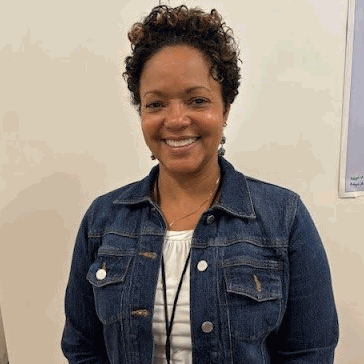

Department of Facility Maintenance, City and County of Honolulu
Saani Fong is the Head of the Storm Water Quality Division’s Planning and Monitoring Branch. She holds a Bachelor of Laws and an MSc in Urban Studies/Affairs. She has an extensive background in planning and policy both in the government and non-profit sectors.

 July 18, 2025 03:00 pm
to
July 18, 2025 03:00 pm
to

Department of Facility Maintenance, City and County of Honolulu
Randall Wakumoto is the Program Administrator for the City and County of Honolulu’s Storm Water Quality Division within its Department of Facility Maintenance. He has 28 years of engineering work experience with the City and County of Honolulu and has a Bachelor of Science’s degree in Civil Engineering from Santa Clara University.
He also possesses a professional engineer’s license in the State of Hawaii. His responsibilities involve administering the City’s storm water management program which includes coordinating with the various City departments to ensure compliance under the Federal Clean Water Act requirements.
He oversees a group of engineers, planners, environmental technicians and community relations specialists that perform various types of inspections, enforcement, water quality sampling and monitoring, public education, outreach and training. In addition, the division is involved in managing and implementing a number of Capital Improvement Program (CIP) projects focused on improving water quality.

 July 18, 2025 03:30 pm
to
July 18, 2025 03:30 pm
to
Lorem ipsum dolor sit amet consectetur. Sit aenean at mauris ut vel. Vel quam et faucibus dui ornare urna cras ultrices. Pellentesque.
Lorem ipsum dolor sit amet, consectetur adipiscing elit, sed doeiusmod tempor incididunt ut labore et dolore.
What’s Included
Lorem ipsum dolor sit amet, consectetur adipiscing elit, sed doeiusmod tempor incididunt ut labore et dolore.
What’s Included
Lorem ipsum dolor sit amet consectetur. Sit aenean at mauris ut vel. Vel quam et faucibus dui ornare urna cras ultrices. Pellentesque.Lorem ipsum dolor sit amet consectetur. Sit aenean at mauris ut vel. Vel quam et faucibus dui ornare urna cras ultrices. Pellentesque.

Lorem ipsum dolor sit amet consectetur. Sit aenean at mauris ut vel. Vel quam et faucibus dui ornare urna cras ultrices. Pellentesque.Lorem ipsum dolor sit amet consectetur. Sit aenean at mauris ut vel. Vel quam et faucibus dui ornare urna cras ultrices. Pellentesque.
Get The Letter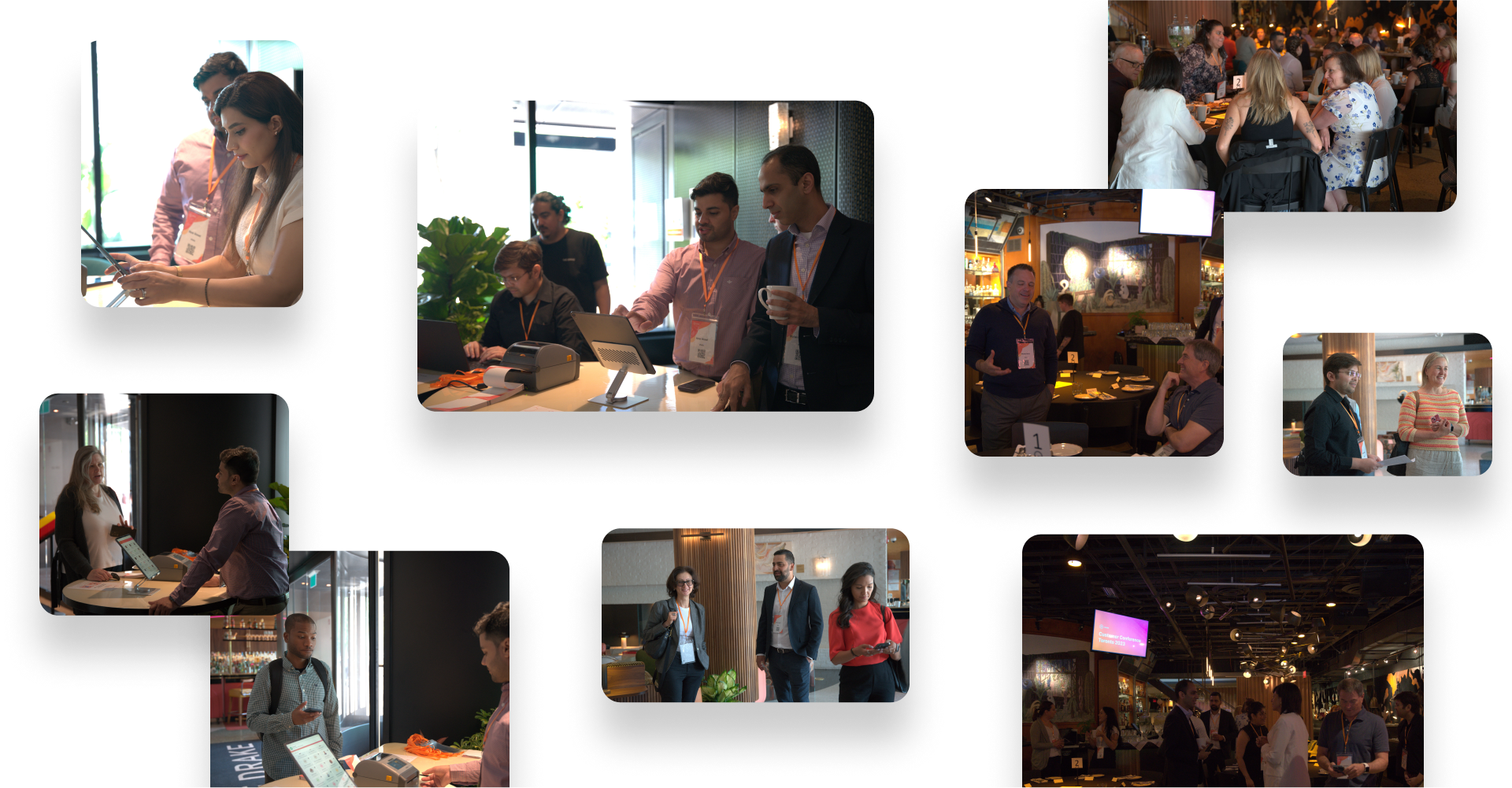
Pretium vulputate sapien nec sagittis. Accumsan tortor posuere ac ut. Pellentesque adipiscing commodo elit at imperdiet dui. Lacus laoreet non curabitur gravida. Faucibus purus in massa tempor nec feugiat. Pellentesque elit ullamcorper dignissim cras.

Pretium vulputate sapien nec sagittis. Accumsan tortor posuere ac ut. Pellentesque adipiscing commodo elit at imperdiet dui. Lacus laoreet non curabitur gravida. Faucibus purus in massa tempor nec feugiat. Pellentesque elit ullamcorper dignissim cras.

Pretium vulputate sapien nec sagittis. Accumsan tortor posuere ac ut. Pellentesque adipiscing commodo elit at imperdiet dui. Lacus laoreet non curabitur gravida. Faucibus purus in massa tempor nec feugiat. Pellentesque elit ullamcorper dignissim cras.

Pretium vulputate sapien nec sagittis. Accumsan tortor posuere ac ut. Pellentesque adipiscing commodo elit at imperdiet dui. Lacus laoreet non curabitur gravida. Faucibus purus in massa tempor nec feugiat. Pellentesque elit ullamcorper dignissim cras.

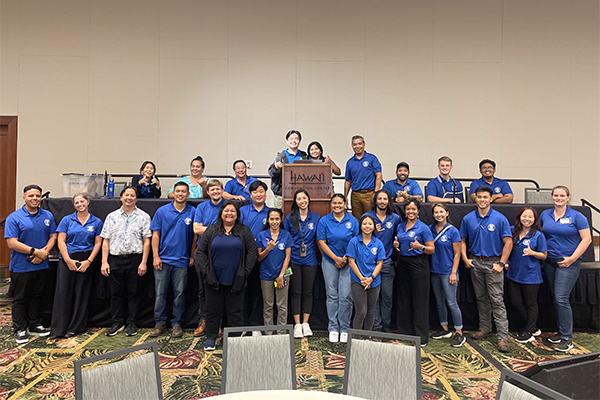
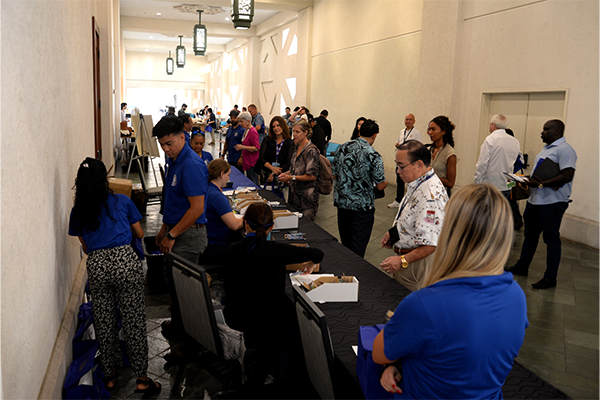

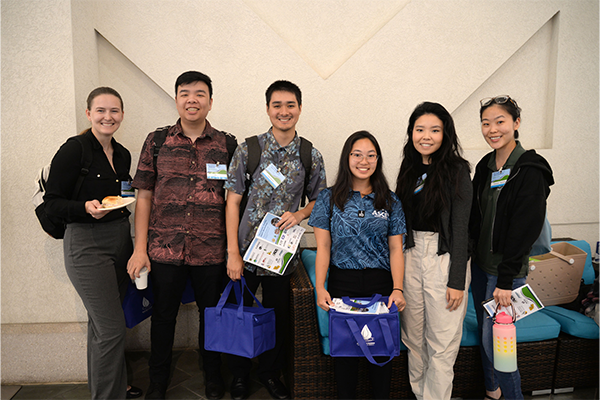
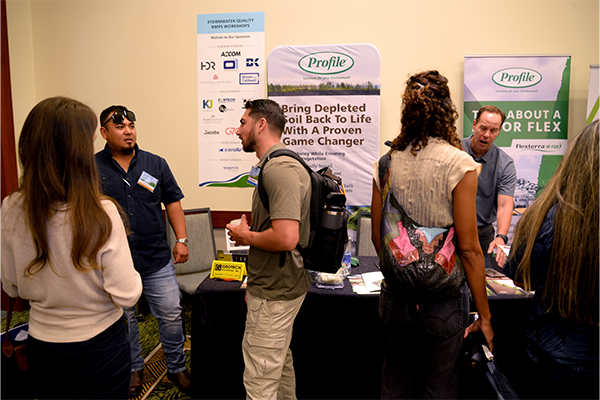
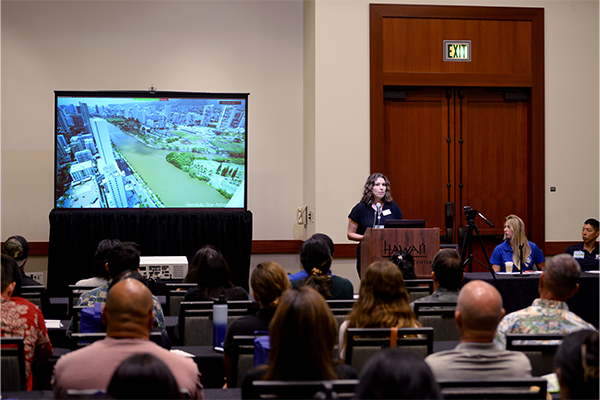

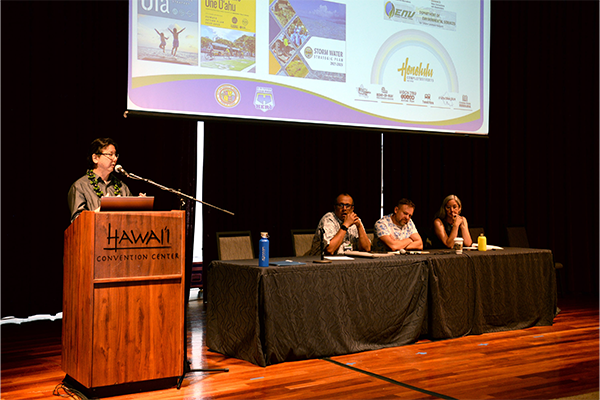
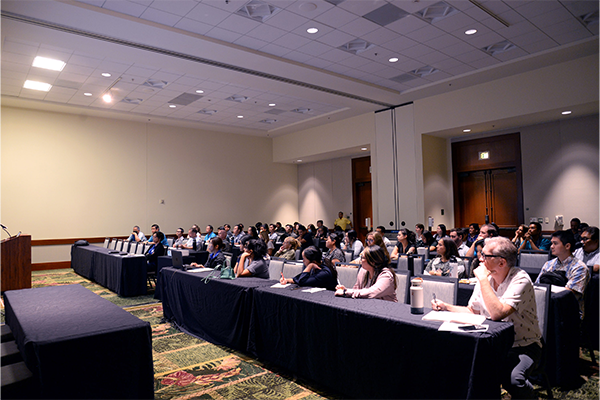
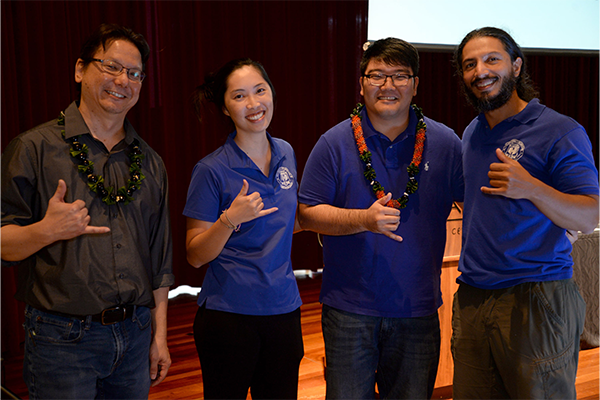
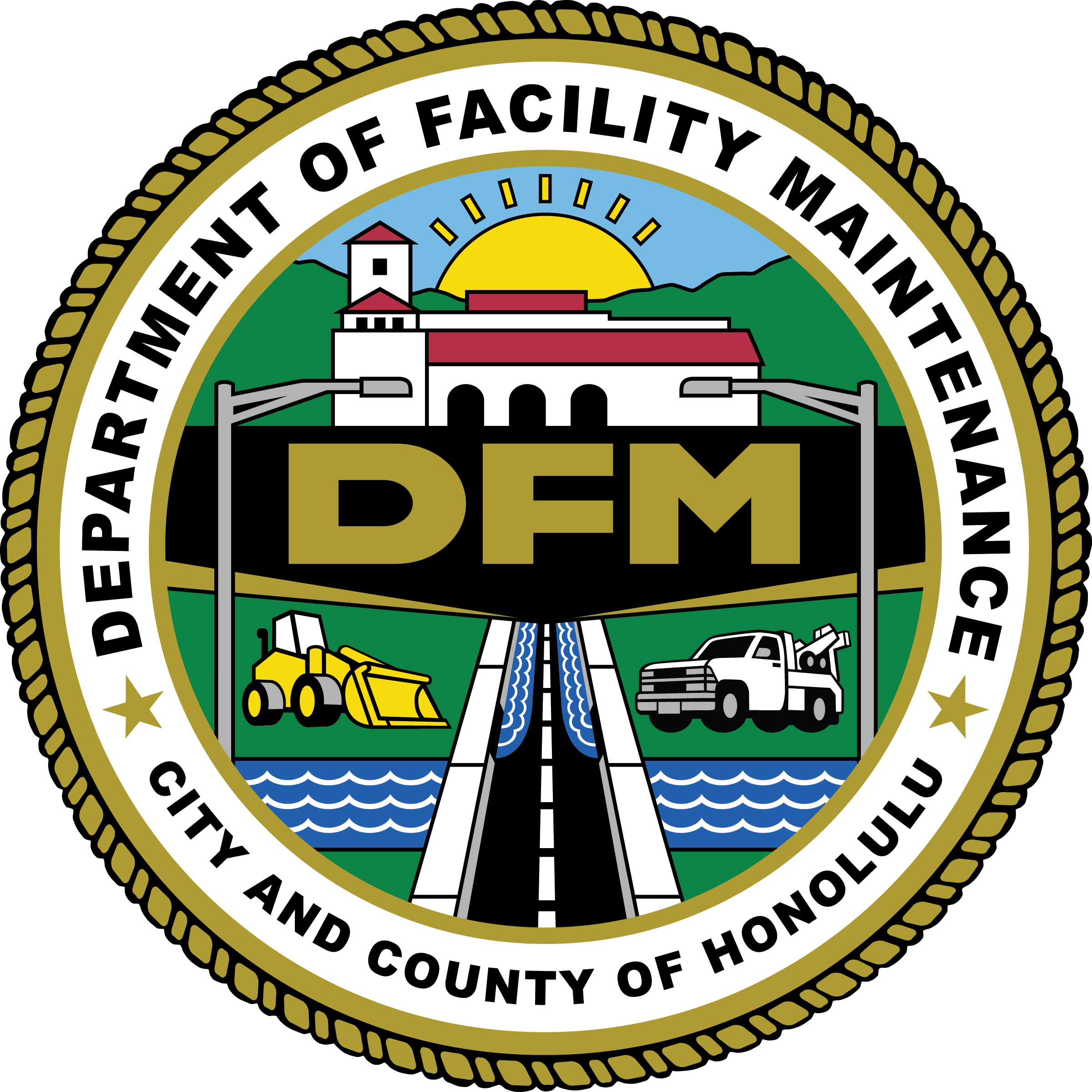

 Listen
Listen

